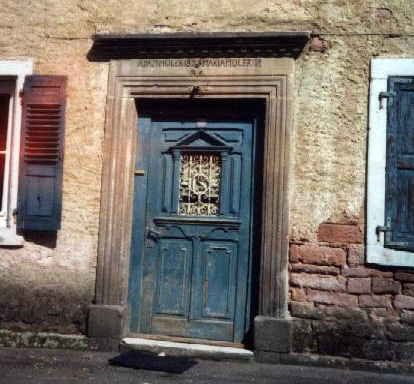| ←(Use Google Translate to see an approximate translation into another relevant language) |
[General index] [Index to chapters] [Index to galleries] [Full family history]
This document contains what I remember about my paternal grandmother, Lenore Susan Maria da Cruz, neé Rager, whom we called Gus, born in Frederick, Maryland, in 1896, to descendents of German and Swiss immimgrants from 100 years before. Besides my own memories, I have family albums and documents, plus help from some Rager relatives and various online genealogy sites. This is just one part of a larger document addressed to my own children.
Dad = my father, Francis da Cruz Sr. (Frank), first son of Daniel da Cruz.—Frank da Cruz <fdc@columbia.edu>
Pete or Uncle Pete = Daniel Patee da Cruz, second son of Daniel da Cruz.
Gus = Dad's and Pete's mother Lenore and my grandmother.
Daniel = My grandfather, Gus's husband, Daniel da Cruz.
Us little ones - Me and my little brother Dennis.
You, you guys, Peter, Amy = my children Peter and Amy da Cruz.
Most recent update: 12 February 2025 12:06:10
My Grandmother Gus
[SEE IN FAMILY TREE] [SEE GUS GALLERY]

|
| Gus at home 1948 |
She grew up with her family in Frederick: three brothers and five sisters; Gus was the youngest. They lived in a series of small townhouses in Frederick, and in high school Gus (along with her sisters and maybe her mother) helped the family make ends meet with a dressmaking business.
In 1916 at age 20 she entered Georgetown University Hospital School of Nursing in Washington DC, where she graduated the same year in a ceremony mounted by the Sisters of Saint Francis. She was baptised in the Catholic Church as a condition for acceptance into the program. As to her "forced conversion" (as Dad and Pete called it), I don't think she thought twice about it; all the years I knew her she never said a word about religion.
In 1917 she formed a relationship with one of her patients, Daniel da Cruz, a Catholic and former missionary priest from Portugal. Daniel couldn't find work in DC so he took Gus with him as he searched for a teaching position, traveling together before they were married, just as the United States entered World War I:
Marriage of K.U. InstructorDad was born 10 months later, on April 1, 1918, still in Lawrence, Kansas, while Gus was a World War I Red Cross nurse. Daniel finally found a permanent place at Miami University of Oxford, Ohio, and Dad's brother Pete (Daniel Jr.) was born there in 1921. Gus adored both her children, whereas (as my father told me) their father didn't pay much attention to them; he was always buried in his newspapers, books, and journals.
Daniel da Cruz, instructor in Portuguese in the University [of Kansas] and Miss Lenore Rogers [sic] of Washington D.C., were married June 7 in Kansas City [Missouri]. At present Mr. and Mrs. da Cruz are on their honeymoon trip in Missouri. They will be at home after July 1 at 1117 Vermont Street. Mrs. da Cruz is a graduate nurse and while in training in Washington, she nursed Mr. da Cruz through a serious illness contracted in Portuguese South Africa. She was appointed to one of the Red Cross units. She chose marrying instead of going to France however. Mrs. da Cruz already has offered her services to the Lawrence Red Cross.
—Lawrence, Kansas, Journal-World, 11 June 1917, p.3.
In 1924 Gus walked out on Daniel and (this part is yet to be proven) took the children with her. I don't know what the problem was but I suspect it was a clash of personalities — Daniel was an intellectual interested only in concepts, science, philosophy, history, literature, and politics, and he was rather stern, humorless, and pedantic. Gus was interested in people, animals, and real life.
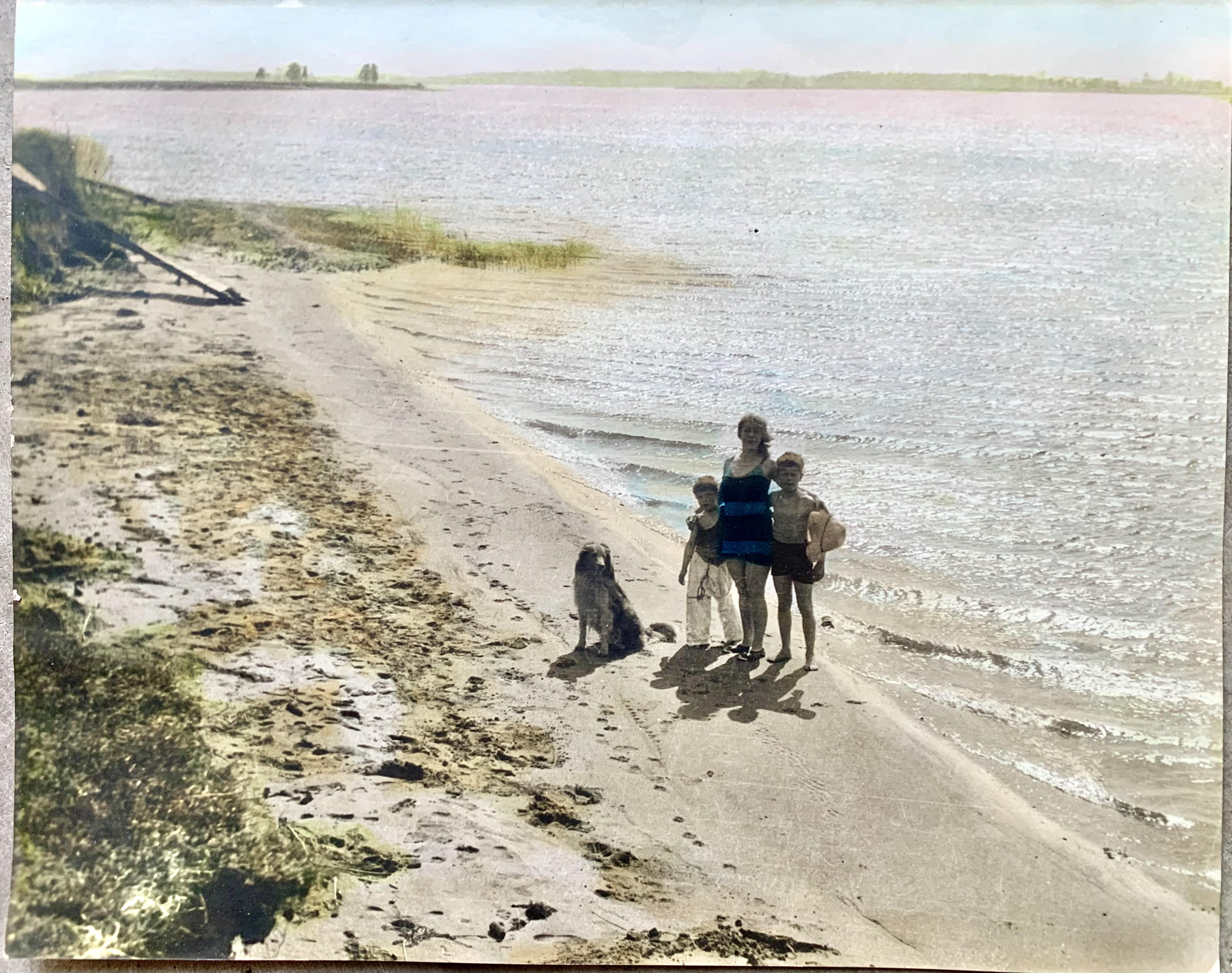
|
| Gus, Pete, and Dad, Eastern Shore about 1928 |
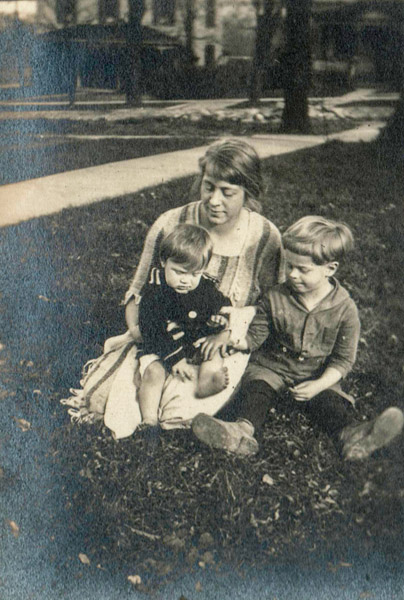
|
| Gus, Pete, Dad, 1924 |
From 1925 to 1927 the kids lived in Bozman, Maryland, with a family named Hardcastle; exactly how this came about and how the Hardcastles are related to Gus or anybody else remains a mystery. Gus might have lived there too because pictures taken there during those years are in her scrapbook, but it's also possible that she lived in the DC area to be able to work and traveled back and forth to see the kids; but that's less likely because I can't see how she could get from DC to Bozman in the 1920s unless she had car (I don't know if she ever had one). Meanwhile, back in Oxford, Daniel filed for divorce:
LEGAL NOTICE FOR DIVORCEThe divorce was granted later in 1927 with Daniel awarded full custody of the children. Even then Gus hung on to them for at least another year, 1928, when they lived in Washington DC.
Lenore Da Cruz, whose place of residence is 1649 Irving Street, N.W., Washington, D.C., will take notice that on the 5th day of April A.D., 1927, Daniel da Cruz filed his petition in the Common Pleas Court, of Butler County, Ohio, being case No.34,463, praying for a divorce on the grounds of willful absence for more than three years.Said defendent is required to answer or otherwise plead on or before the 22nd day of May A.D., 1927, or said petition will be taken as true and the prayer thereof granted.
—Hamilton, Ohio, Journal News, 7 April 1927, p.14.
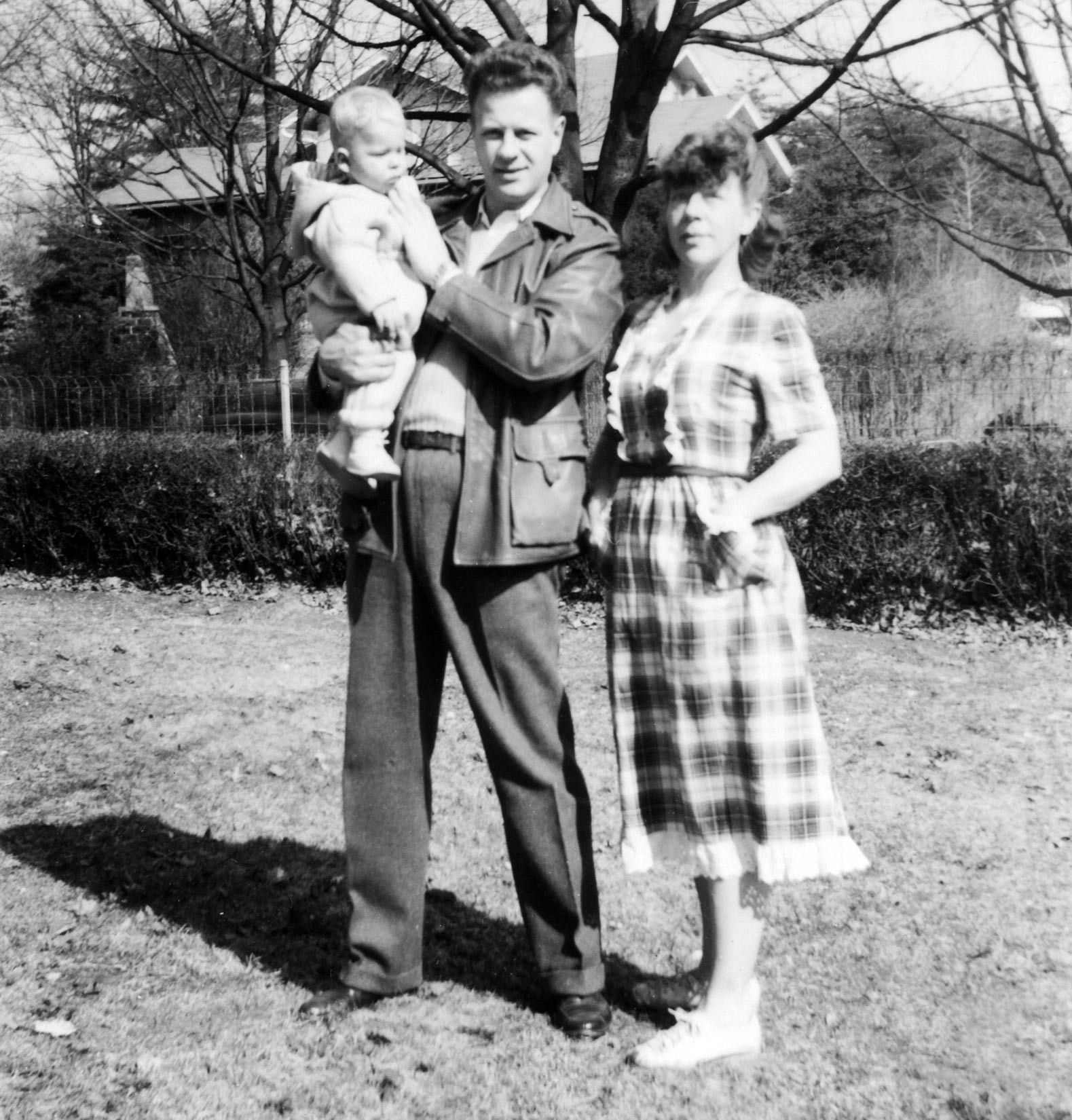
|
| Me, Dad, and Gus 1945 |
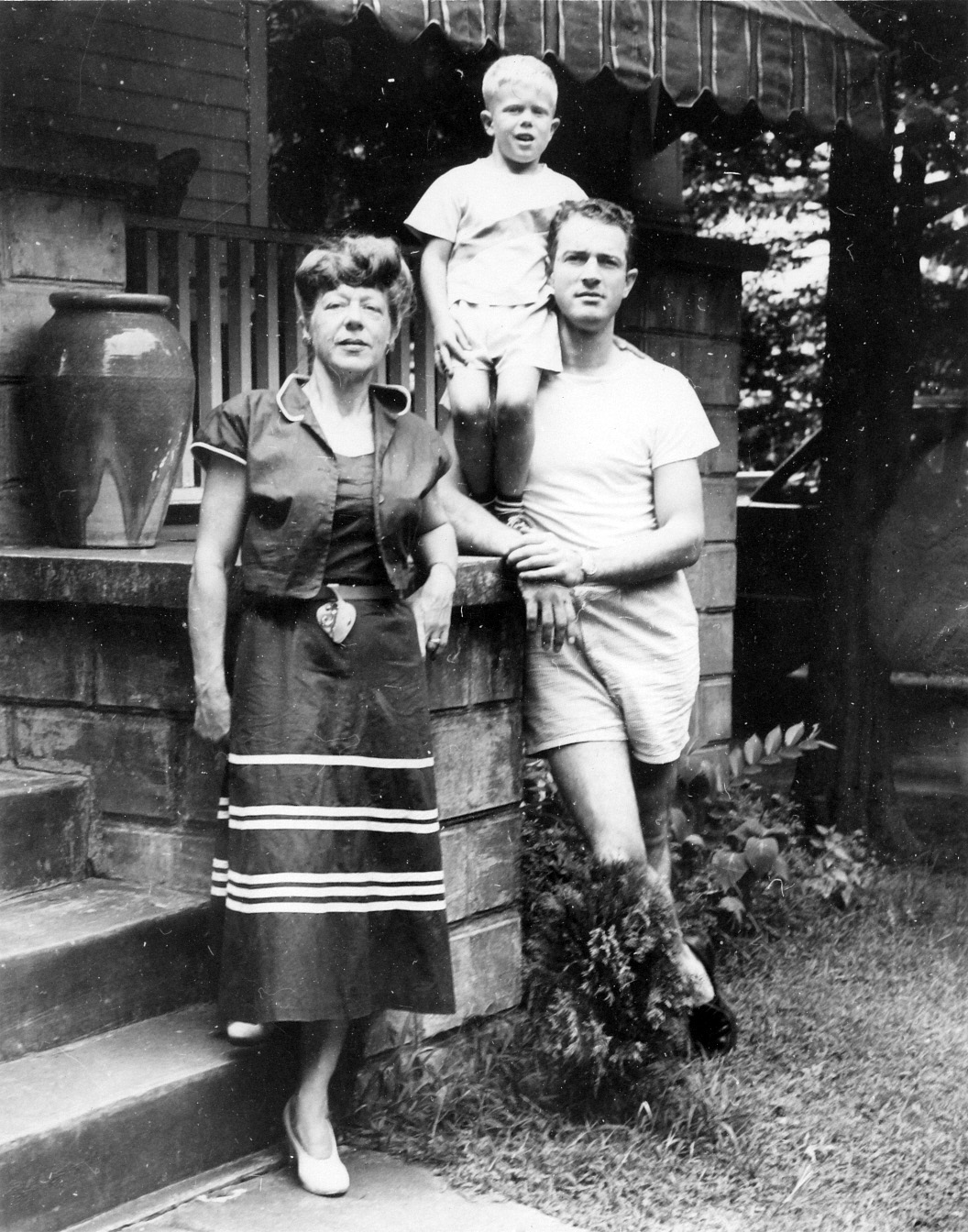
|
| Gus, me, and Pete 1948 |
RICHMOND, Oct 6.—(AP)—The Virginia Supreme Court of Appeals today granted a writ of error to Lenore da Cruz Jacobs from a decree of the Circuit Court of Arlington County which found her marriage to Benjamin L. Jacobs to have been based on fraud and annulled it.So the courts exonerated Gus; then she sued him for divorce on the grounds of desertion and the court ruled in her favor; divorce was granted in October 1946 after four years of separation. What really happened we'll never know but Jake died in 1948 and she kept the house. I lived there with her from 1945 to 1947 and I never saw any trace of Jake in the house or in her photo albums either. Dad and Pete lived there at different points while he was there so they knew him and mentioned him occasionaly (not around Gus). I don't remember what they said but Dad expressed a favorable opinion of him in a 1941 letter.
— The Staunton, Virginia, News Leader, 6 October 1944, p.1.
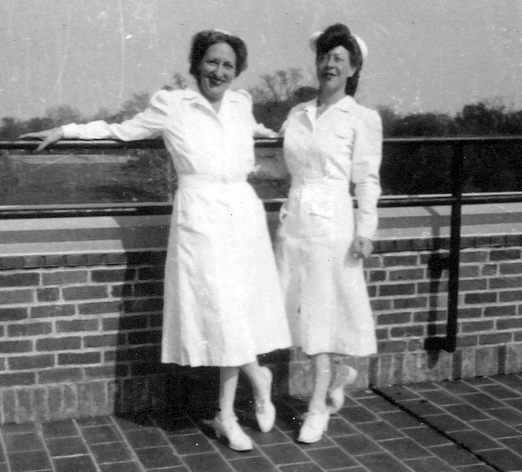
|
| Gus as Georgetown nurse |
In April 1947 we moved to our own house 3 miles away in Fairfax County and we would go to Gus's house on weekends. She was good at everything she did, and cooking was no exception; she made huge dinners and always baked us delicious pies. I loved going there. One of my favorite treats was when she put the leftover pie scraps in little ceramic cups and baked them in the oven and poured cream over them... just for us little guys. My Mom had never learned to cook, so Gus got her started during the years we lived with her.
Sometimes I'd spend whole days with Gus, just the two of us. She would take me on the bus into DC where we'd ride around on the trolley or go to one of those old-time Chinese restaurants where you sit in a private booth behind a beaded curtain. Or to an amusement park on the Maryland side called Glen Echo (1891-1968; her sister Alice Lauretta — Aunt Al — lived near it). Gus was the relative I was closest to and now that I think of it, the only one (besides Uncle Pete) who ever showed me any affection. ('m sure my Mom did too in the early days but I can't remember it; my impression is that she suppressed all emotion as a survival mechanism against my father's endless abuse).
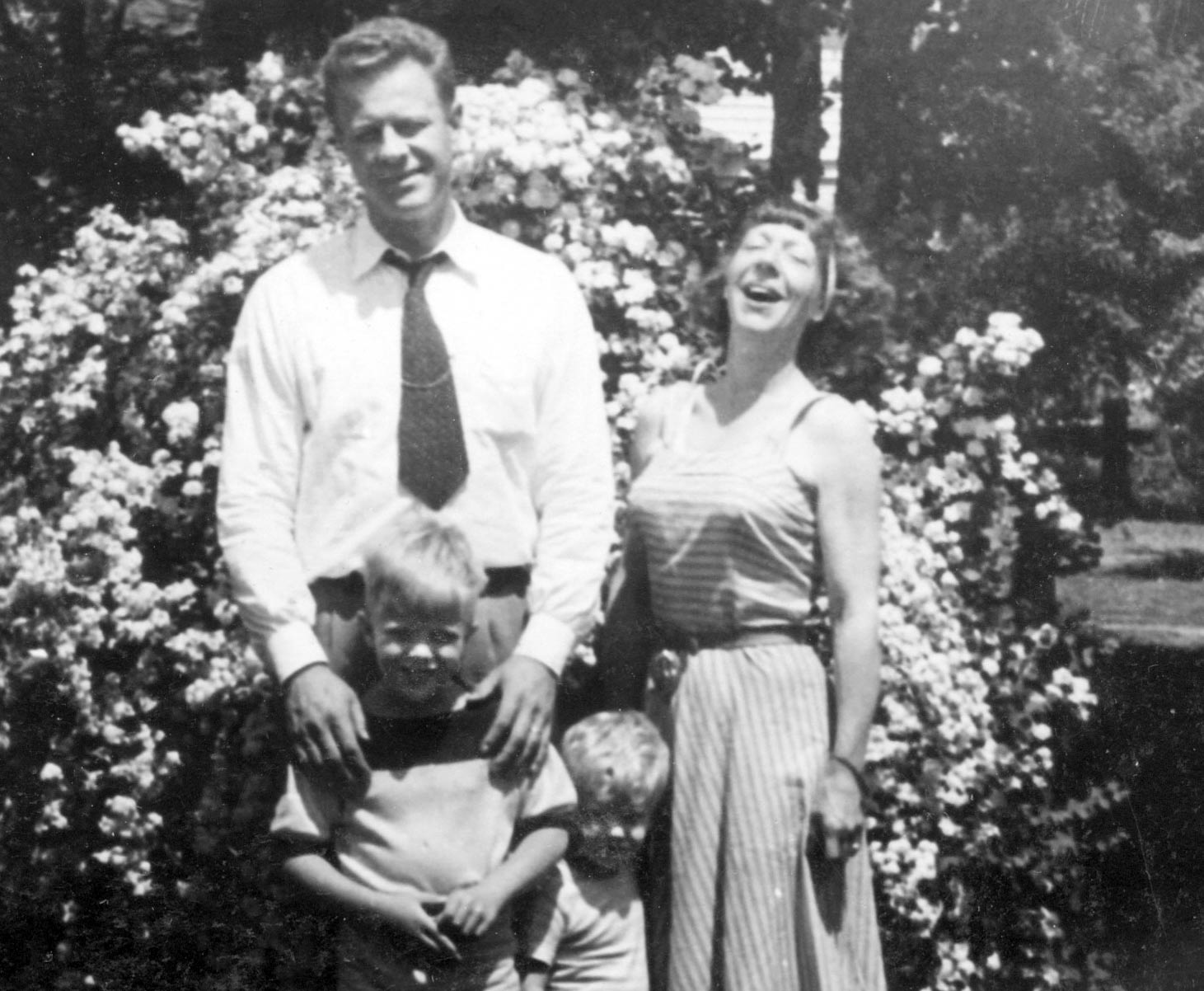
|
| Dad, Gus, me, and Dennis, 1952 |
After we got our first car in late 1949 it was much easier and we went to her house every weekend. Or drove there and brought her back to our house. Once it was for a big nighttime weenie roast at the Walkers' house next door when I was maybe six years old. Nolan Walker had built a big concrete incinerator-fireplace-grill in the back yard and he invited the whole neighborhood to the inauguration. In addition to cooking things on top, you could bake potatoes and ears of corn by burying them under the fire. For fuel, Nolan just used trash. Turns out there was a shotgun shell in the trash and it exploded and I got a load of buckshot in my butt! Wow, did that hurt... As a country boy, I was used to pain, but this was something else. I probably jumped six feet in the air and then ran around like my pants were on fire, which is what it felt like, or maybe they were. Gus caught me, calmed me down, took me inside and dug the pellets out, joking with me all the while, dressed the wound, and made me feel good enough to go back to the weenie roast. She was always able to make everything better except at the very end.
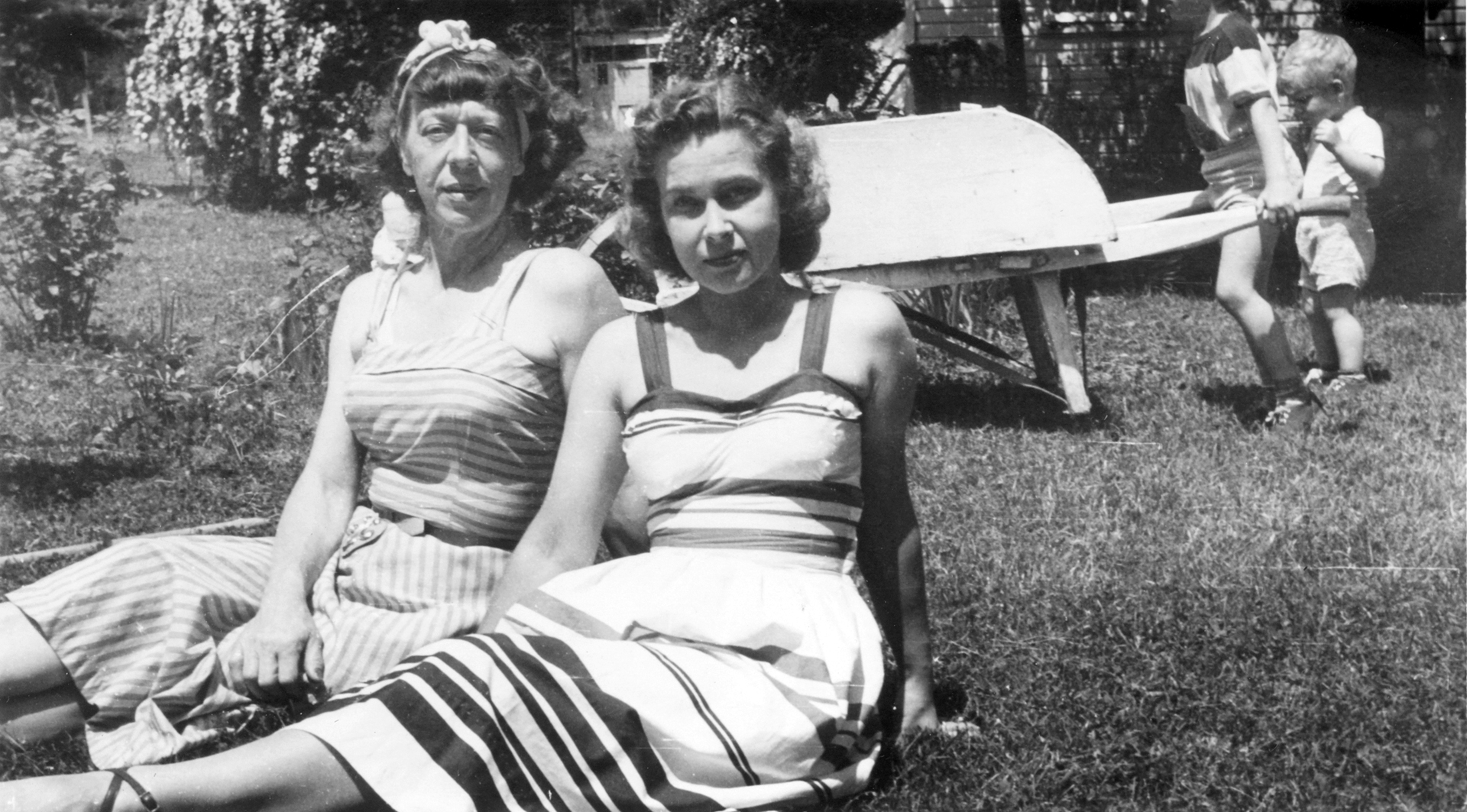
|
| Gus and Mom in Gus's back yard, 1952. Mom wearing a dress she made herself. Both looking at my father as he takes the picture. What are they thinking? |
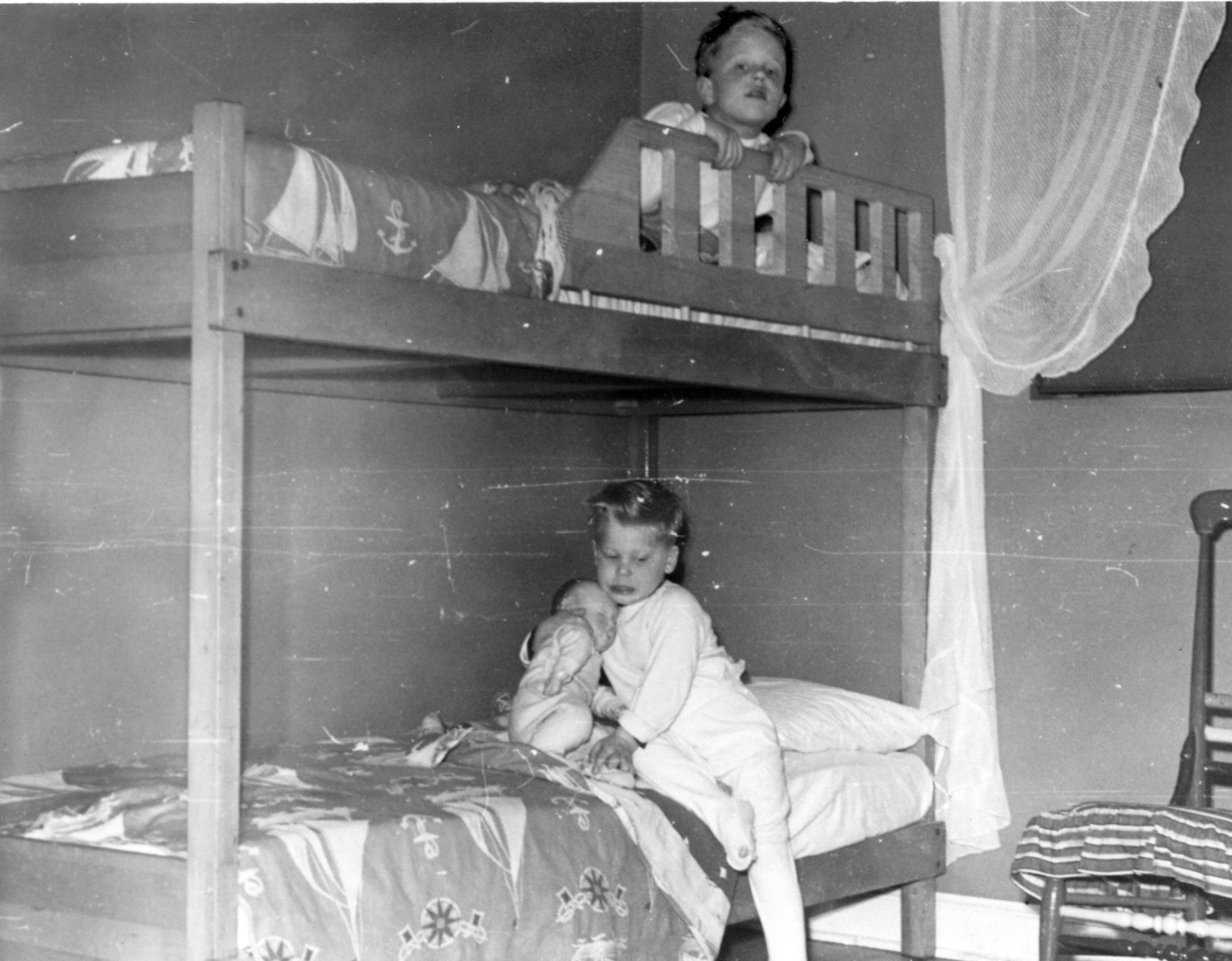
|
| Our bunkbed |
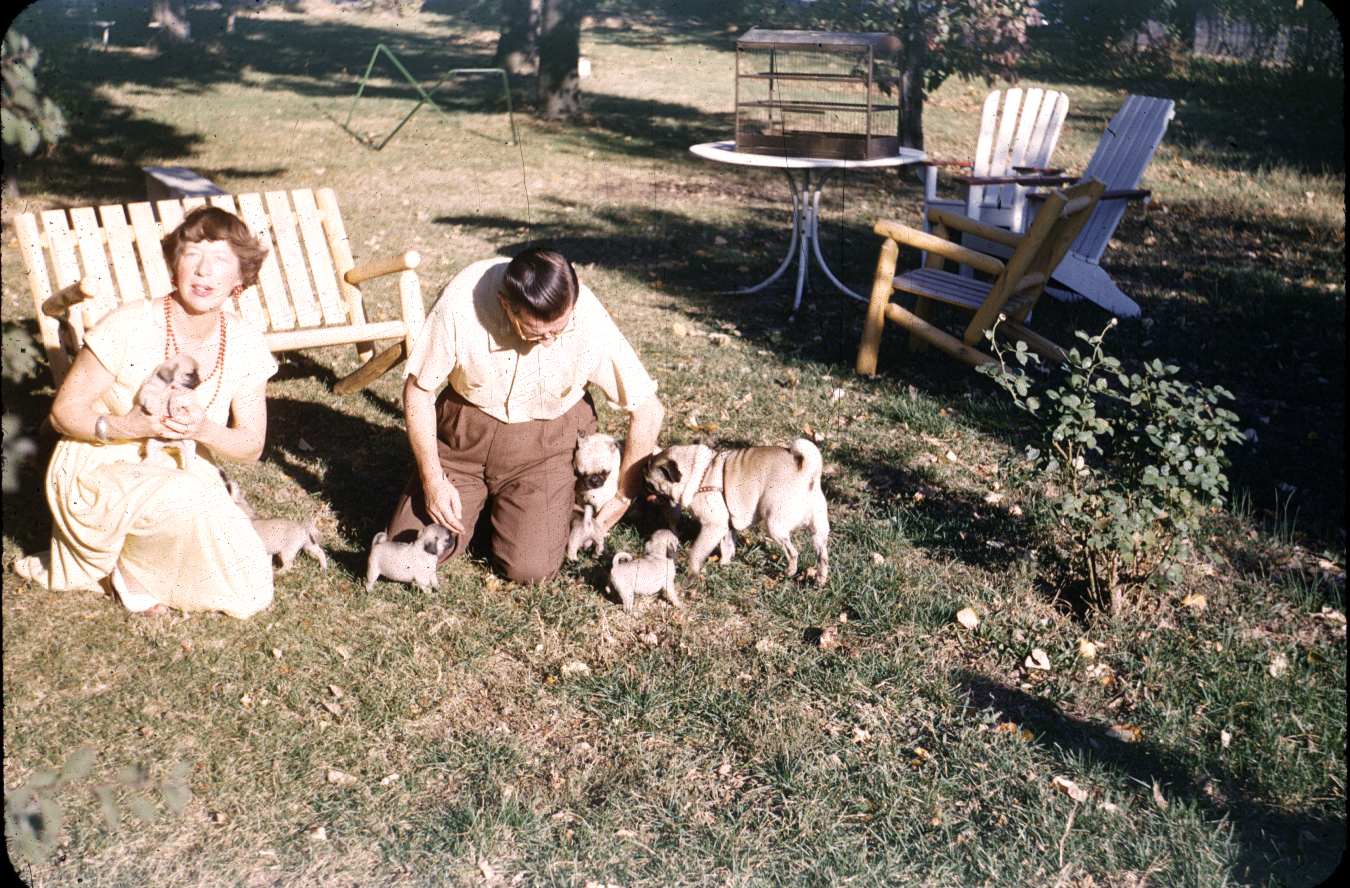
|
| Gus, Mischa, and toy pugs 1954 |
Gus's death
Gus killed herself just after I turned 11. Shortly before this she brought me into her dark bedroom, onto her big spool bed, heavy red velvet drapes drawn, and she was holding me with all her strength and crying and crying for what seemed like forever, saying "It's all over, it's all over!" I thought it was because my Mom had tried to kill herself again and was in the hospital, but now I know that was only part of it; 50 years later Dad's second wife Audrey told me Gus had terminal cancer. I realize now that she was crying not so much because she was about to die (she had seen more death and suffering as nurse in WWI, the 1918 flu, and WWII that she accepted it as part of life) but because then she would not be able to protect us from Dad — she was the only one who could make him behave.
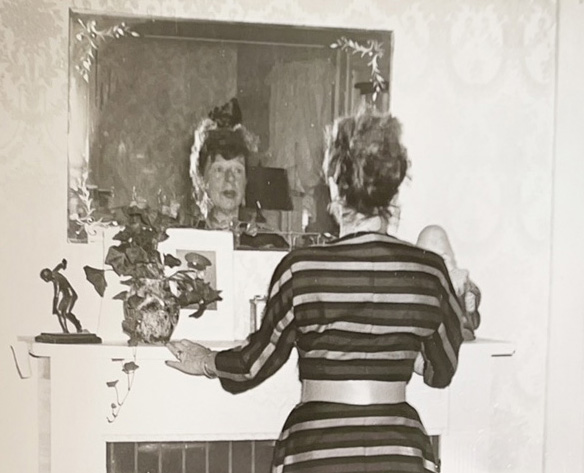
|
| Last photo of Gus |
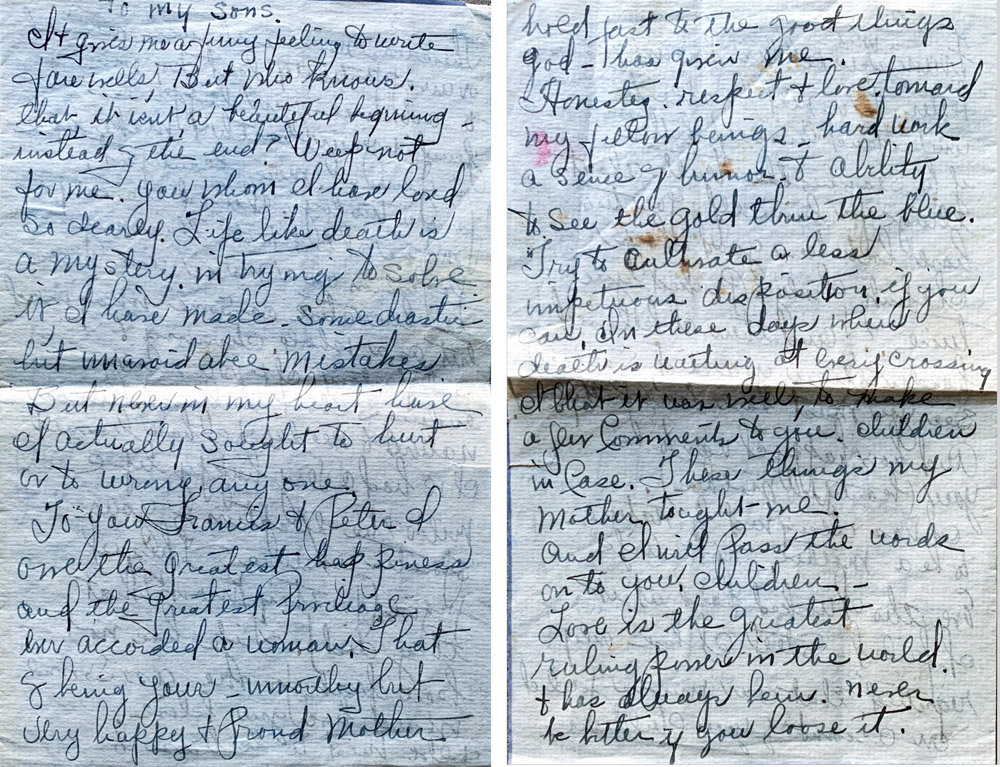
|
| Gus's farewell note to her children |
Meanwhile, around the same time she decided all the ducks in her backyard had to die. She took me with her as she decapitated them one by one with a hatchet without explaining why. The headless bodies ran around and some flew for a minute or two before being still. One even flew over the fence into a neighbor's yard. I had no idea why this was happening and only now I realize that she was organizing her death, and I imagine she knew I'd figure it out eventually. And then later, after the final photos were taken and we weren't there, she took all of her pugs (and I guess her cat too) to a vet to be euthanized. No loose ends.
Gus died November 15, 1955, not even 60 years old. Uncle Pete called on the phone and I picked up the upstairs extension at the same time dad picked up downstairs and I heard the news; in Pete's words, she "swallowed some goofballs". The death certificate says suicide by barbituate poisoning, a lethal quantity of Seconal. Later that day dad broke the news to me and Dennis separately. It was awkward for me because I already knew, but it was also creepy having him bring me into a closed room to speak with me alone. He did the same with Dennis (who was only about six), who told me years later that he thought dad was going to eat him.
Strangely, I don't recall being upset about Gus dying. I don't think I understood what "dead" was; nobody I knew had ever died before. If there was a funeral I don't remember it, but I recall being at the place she was interred; it was raining hard and I was looking through a glass window, that's all I remember. I knew she killed herself because I overheard the phone call, but my Mom tried to do that all the time; I thought it was normal and all women did it, and then they always come back after a stay in the hospital. But after Gus was gone, family life became increasingly grim; she never did come back and as the years and decades pass, I think of her more and more.
Afterwards
Shortly after Gus's death, we went in her attic to see what was there and found hundreds of stacks (each taller than me) of 78 RPM records, not vinyl but shellac (and some of them on cardboard), probably ten thousand all together. I took a few of them at random, all the rest went to the dump. The ones I snagged were "Jazz-age" popular music. Here are the ones I remember:
- Black Bottom, Arden-Ohman Dance Orchestra, Brunswick, 1926, shellac.
- Crazy Words Crazy Tune, Frank Crumit, Victor, 1927, shellac.
- Ro-Ro-Rollin' Along, Bert Hirsch Orchestra, Hit of the Week, 1930. 10-inch cardboard record with song pressed into resin on one side. Hit of the Week records were made from 1930 to 1932 and sold only at newsstands, price 15¢ (click here for more about these records).
I left them behind when I went in the Army. By the way, making shellac records was an extremely complicated and labor-intensive process, see video (or try here). This one is worth watching so if the URLs go bad, do a video search for "how shellac records are made" (without the quotes).
I wonder if Gus also bought records by Black artists like Louis Armstrong, Bessie Smith, Alberta Hunter, Fletcher Henderson, Duke Ellington, King Oliver, Sidney Bechet, Don Redman, Sy Oliver, Kid Ory, Fats Waller... It's hard to imagine they wouldn't have been in those stacks of thousands and thousands of records.
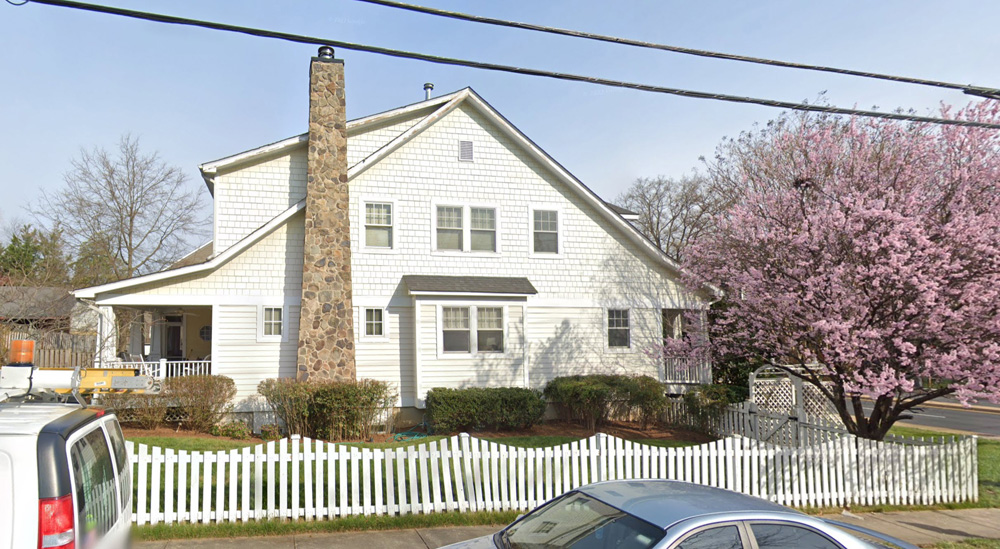
|
| Gus's house in 2023 (Google street view) |
Gus's ashes are buried at National Memorial Park, 7482 Lee Highway in Fairfax Country, Virginia; Block II, Lot 1480, Space 14. I went there once as a teenager; my high-school friend Ludwig drove me in his 1953 Buick. Her grave was marked by a simple brass plaque in the grass, flush with the ground, no headstone.
Looking back, I think I had more feelings for my grandmother than I did for either of my parents. She wasn't withdrawn and silent like my mother, and she was never superior, stern, angry, critical, judgemental, or bossy — let alone violent or racist — like my father. To cite just one example: as you can see from the photos, Gus was very particular about her posture but she never told us children or anybody else to straighten up or sit up straight. She didn't lecture us, she showed us by example how to be a good person. She was never anything but warm, loving, jolly, kind, generous, energetic, positive, and always a joy to be with.
Questions
Was Gus still working up until her death? She must have been; how else could she live? So how did she commute? In 2023, Google Maps shows various combinations of buses and walking between her house and Georgetown University hospital, about an hour each way with a mile's walk on each end (see Google map). Quite a haul, but she never complained about anything.
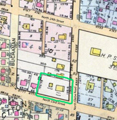
|
Gus's parents and ancestors
[SEE IN FAMILY TREE]
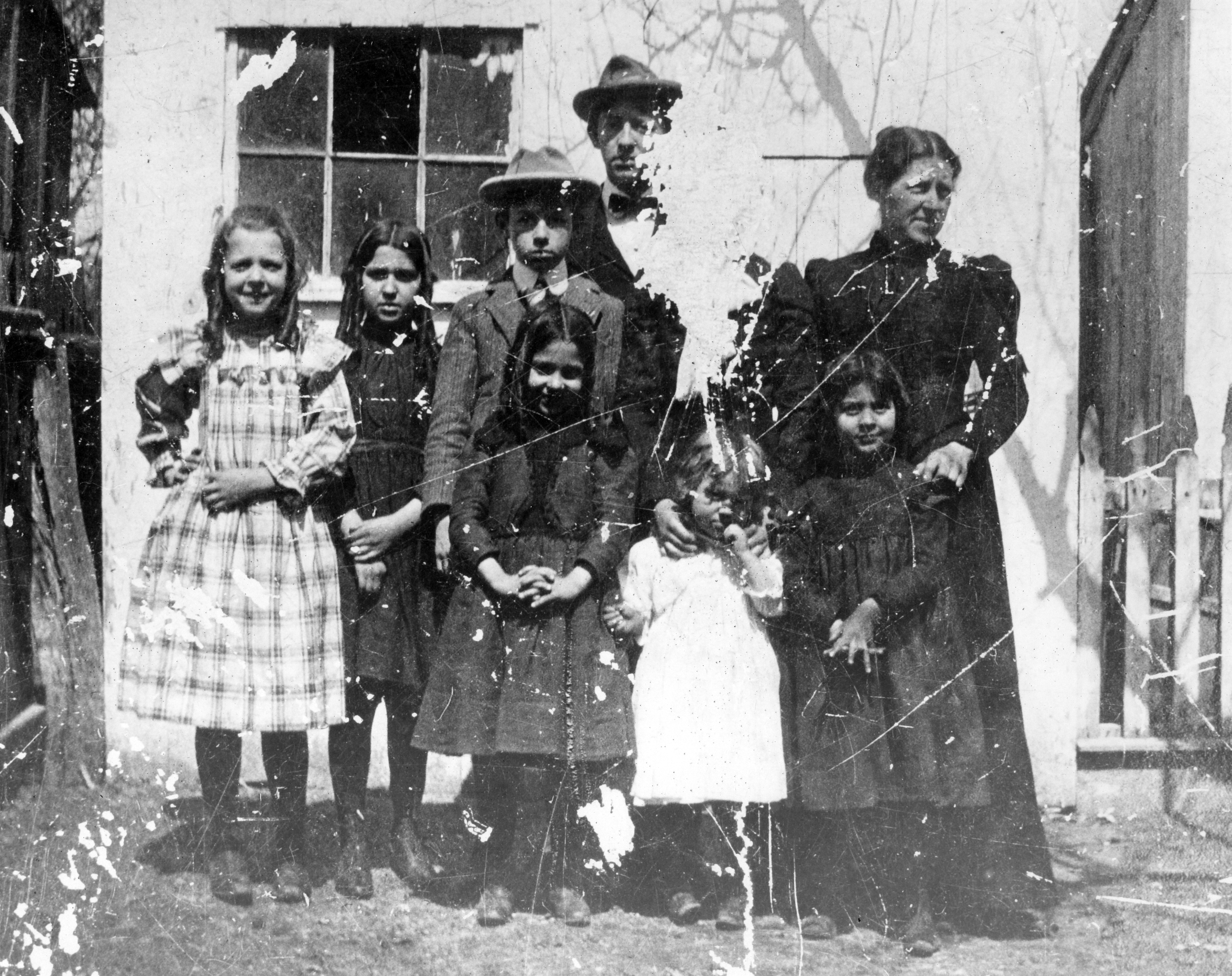
|
| Rager family about 1900; Gus is the little one in the white dress. |
Back row: Arthur;Gus noted in one of her scrapbooks that Eloise married Captain George H. Gillis of North Abington, MA, November 1, 1919.
Middle row: Alice, Kate, Isaac, Helen (face obliterated), Mother Susan;
Front row: Bessie, Lenore (Gus), Eloise.
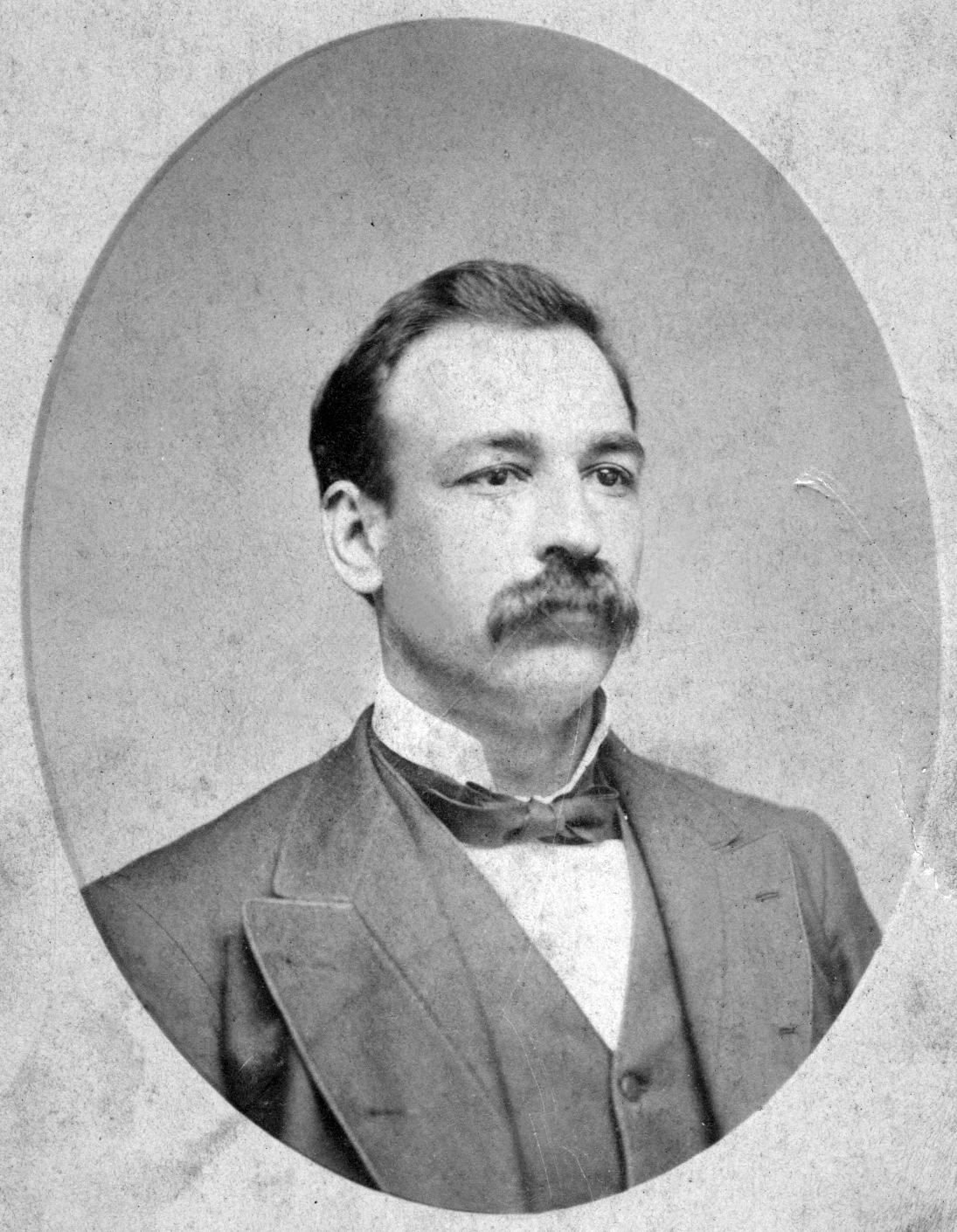
|
| Rufus Rager ~1890 |
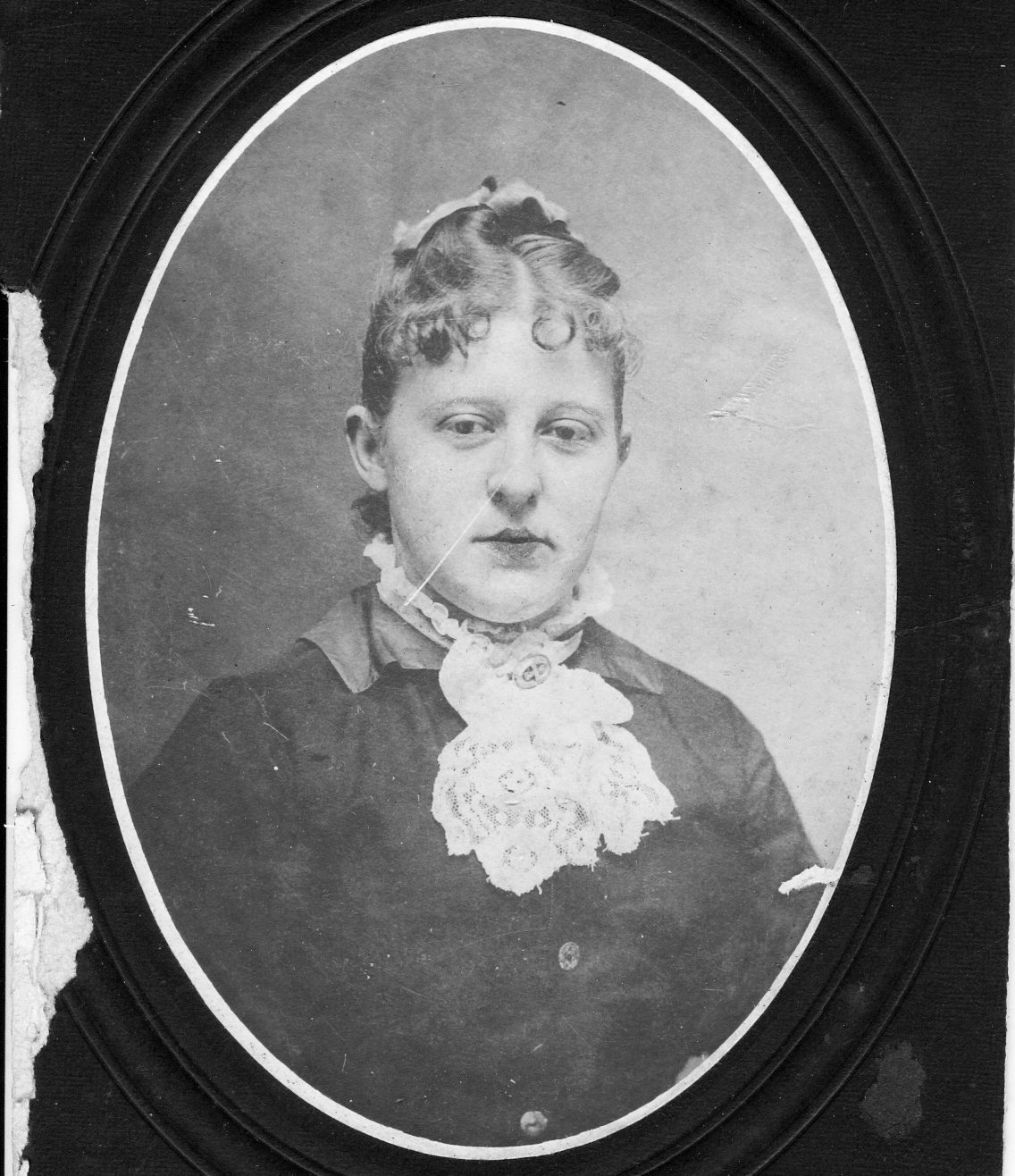
|
| Susan Boyer ~1890 |
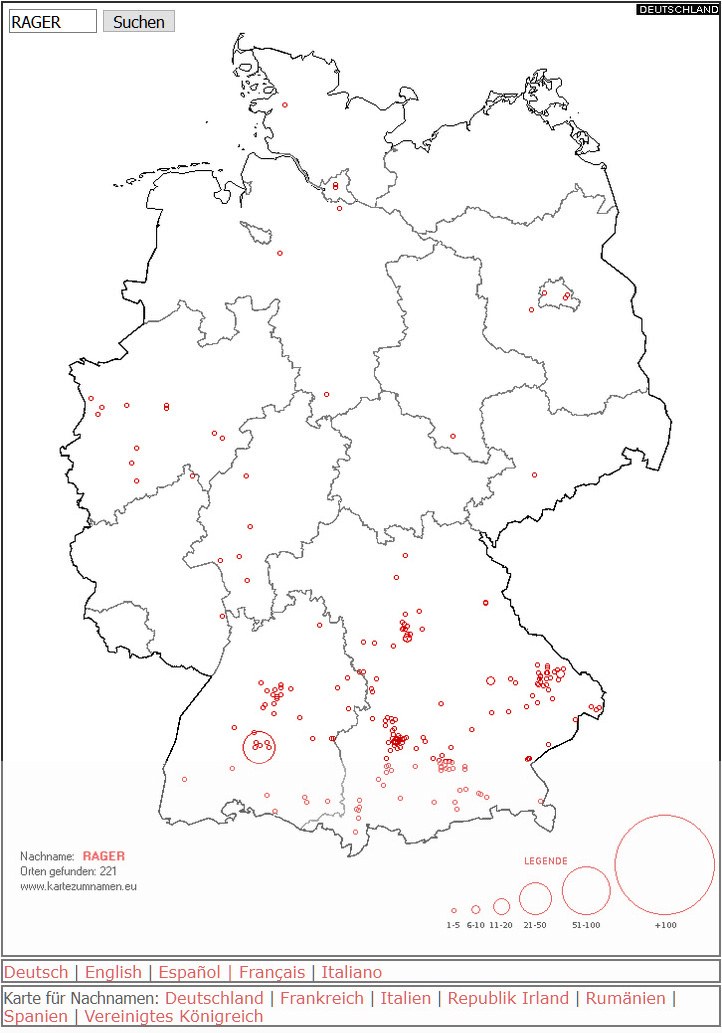
|
| Rager map |
In July 2018 I found a way to access the Frederick County newspaper archives. For a small town, it had a lot of newspapers! During the time the Ragers lived there — about 1880 to 1923 — they were in the papers hundreds of times. In those days, small-town papers reported every single thing that everybody did: who was visiting who, who was sick, who moved, who acted in the school play, who went to visit a relative, who came to visit... Rufus was a real striver, auto-didact who joined every fraternal organization, taught himself civil engineering and surveying, ran for office many times and had numerous businesses and offices all over town, was "director" of the volunteer fire brigade, and on and on. He had so many children I thought they must have lived in a big house in the country but no, at the time of his death they lived in "downtown" Frederick in a two-story storefront from which the daughters (including Gus) ran a dressmaking business.
Rufus was apparently not very robust; the newspapers report various periods when he was laid up with rheumatism for extended periods and other ailments. On November 8, 1912, he had a stroke that paralyzed him, rallied just enough to communicate with family and friends, then gradually lapsed into unconsciousness and died on December 1st. After that his son Isaac left home to join Buffalo Bill's Wild West show, following the example of his brother Harry who had traveled with Pawnee Bill's Wild West Show, and once sued the local hospital for $10,000. Harry had since come home but died in April 1913. The mother Susan moved with the daughters to a smaller (or perhaps just cheaper) house nearby in July 1913. Gus had moved out by 1916 to attend Georgetown University nursing school in Washington DC. Susan moved to Baltimore once the nest was empty and died there in 1923, but is buried in the family plot at Mt. Olivet Cemetary in Frederick, which is Section 00, Lot 19. Jonathan Boyer is there too, as well as Catherine J. Blessing Boyer, Arthur Blessing Rager, and Gus's brother Harry.
The Ragers lived in who-knows-how-many houses. The 1900 census says 45 West Fifth Street (which has to be a mistake; there is no 45, it must have been 25) with ten residents (with their ages): Rufus A 52, Susan L 45, Arthur B 18, Helen V 17, Isaac M 15, Lydia K 13, Allie L 11 (Alice), Bessie I 9, Eloise E 6, Susan L Rager (Gus) 3. In either 1906 or 1910 they moved into 119 West Fifth Street. They were living at 324 North Market Street in 1912 when Rufus died. In 1913, the mother Susan moved herself and girls 340 North Market Street. So these were four of Gus's childhood homes, all but the first small rowhouses, and all within a few blocks of each other.

|
| 25 East 5th Street |
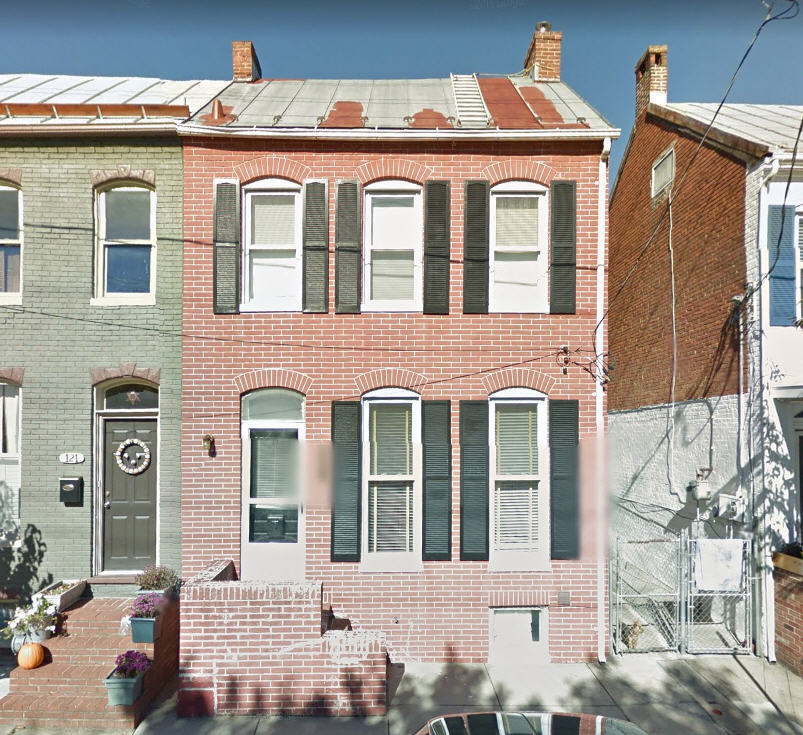
|
| 199 East 5th Street |
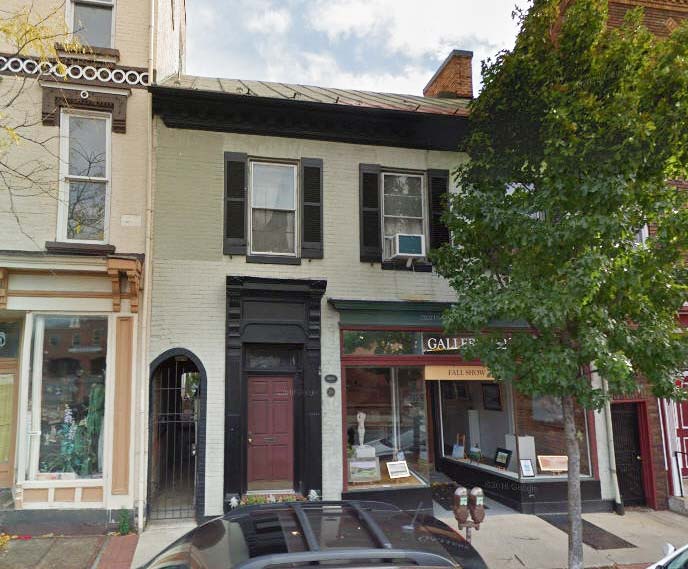
|
| 324 North Market Street |
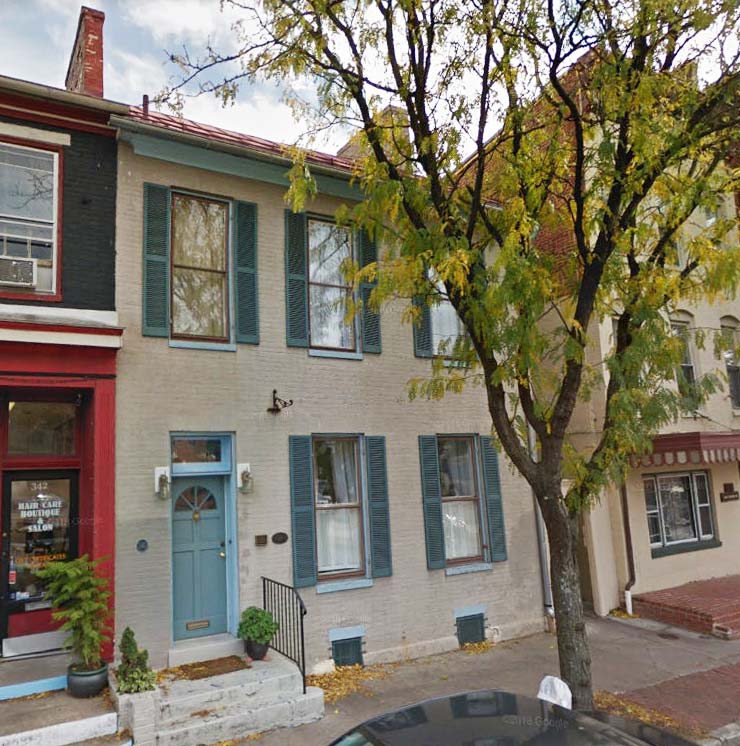
|
| 340 North Market Street |
With all the moving and Rufus's job-changing and money-making schemes, I have the feeling that the Rager kids' childhood was pretty chaotic. The other interesting thing is the complete absence of any mention of church or religion in any of the newspaper articles, even the obituaries and funerals. Maybe Rufus was like grandfather Daniel's brother Manuel: the village atheist. Which jibes with how I remember Gus, she never mentioned religion and as far as I know never went to church. Anyway who knew we had uncles in Wild West shows???
The Blessing family
[SEE IN FAMILY TREE]
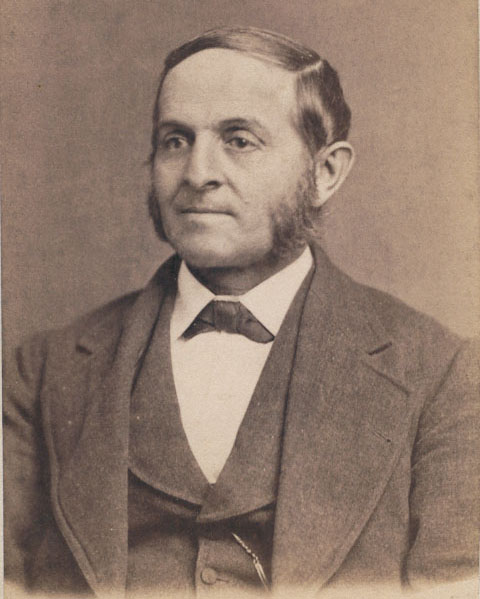
|
| George Blessing 1855 |
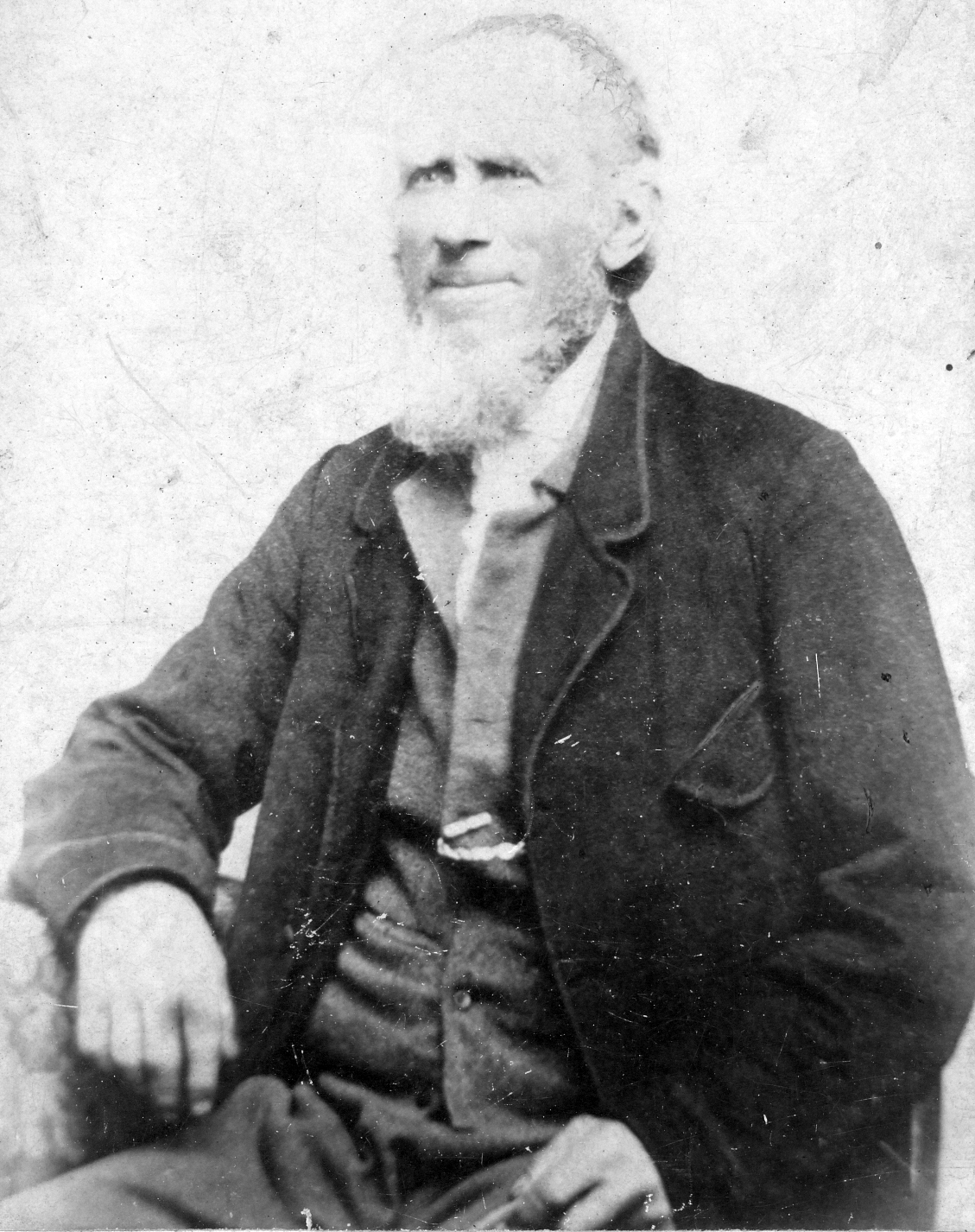
|
| George Blessing 1864 |
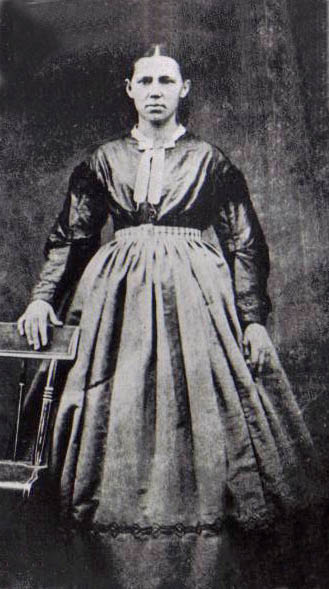
|
| Susan Easterday |
[The Easterdays are not] Blessing, but they are related to all the Blessings because all the Blessings are part Easterday. This for the reason that the wife of the Senior Blessing was Julia Easterday. It is true that all the descendants of Christian Easterday are part Blessing, for the reason that his wife was Julia Blessing.As noted, Blessing Jr. was known as "the Hero of the Highland" for driving away a Confederate raiding party July 6, 1864. That same month, George himself writes, in response to a newspaper article (text found at findagrave.com, as was the 1855 photo and the names of his children and parents):The earlier intermingling of the Blessing and Christian Easterday families by marriage has been a matter of tradition and comment. It is a remarkable fact that the fathers of the George and the Susan, above referred to, each married the sister of the other. Thus George Blessing and Susan Easterday were doubly first cousins before their marriage, the father of Susan being Conrad of "the seven brothers" [sons of Christian Ostertag/Eastday] and the mother of George being Julia of "the three sisters." The maiden name of Susan's mother was Barbara Blessing. The first name of George's father is unknown to the writer. The only honor claimed by the writer in this connection is that his grandfather, Christian, and the "Hero of the Highland" were second cousins, the grandfather of the one and the grandmother of the other being brother and sister.
As you might imagine this poses some challenges for our family tree software. Also see this page.
Messrs. Editors of the Examiner:Speaking of the Civil War, Gus's mother's father, Jonathan Boyer (who was married to George Blessing Jr.'s daughter Catherine), was a Private in the 173rd Pennsylvania Infantry and died from wounds suffered in the Battle of Gettysburg; Catherine received a widow's pension.
Your statement of the barn-yard fight of the 9th instant, is not correct. The facts of the dreadful scene are these: On the morning of that day a Company of Calvary, commanded by Major Harmon and Captain Walker, came in sight of my farm, where they detailed five to come and steal my horses. As they rode up, I gave my son two guns and I took six and went in the name of the Lord God of Hosts to meet them, and as they rode up in haste we fired upon them in quick time, one was mortally wounded (he died at Middletown), the other so bad, they rode under the overshoot of the barn where we had a cross-fire on them. As they were retreating I fired, killing one on the spot and took the other prisoner. The balance got back to the Company, which was from forty to sixty strong, and before I had re-loaded my guns they returned, nineteen in number, and had pressed in their service four of my neighbors as guides, and marched them in advance. I gave my son two guns and another young man one, but they both retreated. I then took four guns, and went to a group of cherry trees; as their guides came up I halted them under pain of death if they did not stand. One of them broke off and ran. I fired on him, without effect. As soon as he reached the Rebels, they opened fire upon me to their hearts content; the splinters from the trees and fence flew in my face, while some of the balls fell at my feet. I had three guns, which I held back (Unreadable word) sure work. After firing some fifty shots they rode off, leaving their dead and wounded in my hands. They sent word that they would bring up a battery and shell me. I sent word back that I had their wounded man in the barn, if they chose to burn him up they could do so. A little before night, Cole's Calvary, under command of Lieut. Colonel Vernon, came in sight. I thought it was the Rebel battery, and I took the dead Rebel's carbine and concealed myself in a bramble bush close to the lane to make that the closing scene of that bloody day. When I saw my happy mistake, I crawled out; they gave me a hearty cheer, rode up to the house, helped to bury my dead, and staid over night. Thus closed the most tragic scene in the history of my life. I am 70 years of age. I do not wish to correct your error to boast, but I do it to encourage our soldiers and people to fight better and look to God for a just victory.
Yours, &c.,
GEORGE BLESSING
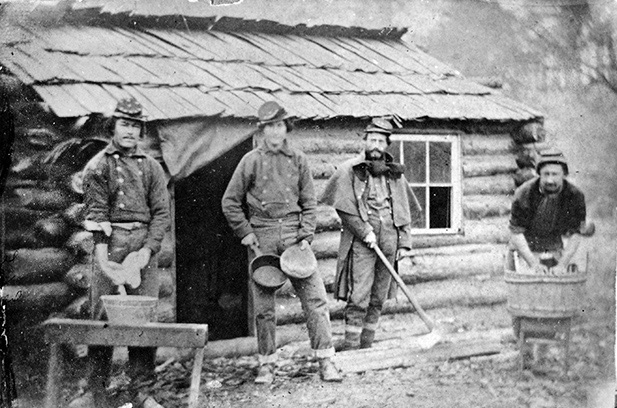
|
| Tom Blessing Civil War photo |
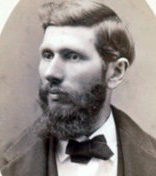
|
| Solomon "Tom" Blessing |
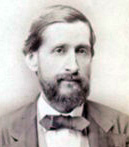
|
| Samuel "Sam" Blessing |
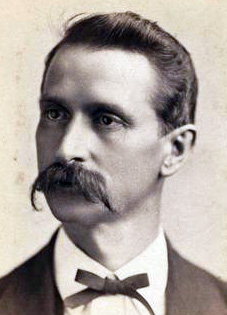
|
| John Philip Blessing |
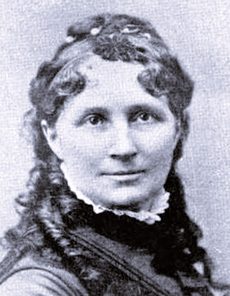
|
| Nellie Blessing |
Digging deeper
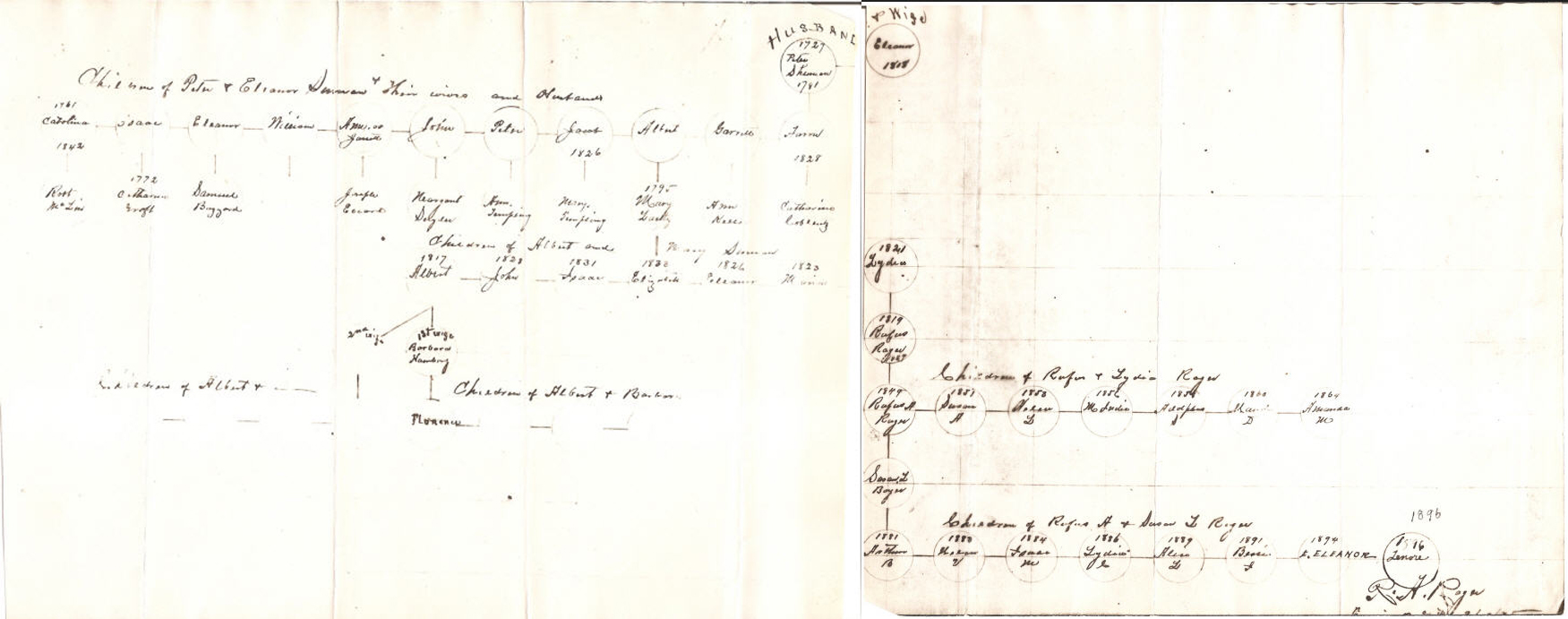
|
| Rager family tree drawn by Rufus A. Rager 1896 or later.
Bottom
line: 1881 Arthur B; 1883 Helen V; 1884 Isaac M; 1886 Lydia C; 1889 Alice L; 1891 Bessie I; 1894; E. Eleanor; 1896 Lenore. |
Anyway, it turns out that if you type the name and dates of a person who lived long ago into Google, you are likely to find them on a number of genealogy sites: ancestry.com, findagrave.com, myheritage.com, wikitree.com, familysearch.com, genealogieonline.nl, and so on. The longer ago the person lived, the more descendents who might be interested in their genealogy. I did this first for Peter Suman and filled in all the illegible names and missing dates from the handwritten tree, plus I found Peter Suman's father-in-law, Michael Miller (Johann Michel Müller), born in 1692 (note: the German name Michel is pronounced MEE-shel). That's on the Rufus Rager side. His wife, Susan Boyer has a lot of ancestors too, going back six generations to families named Spiess and Ostertag in what is now Germany, all the way to a Johann Daniel Heuss, born in 1673 in Bad Homburg (a town near Frankfurt that I visited from time to time 1959-61).
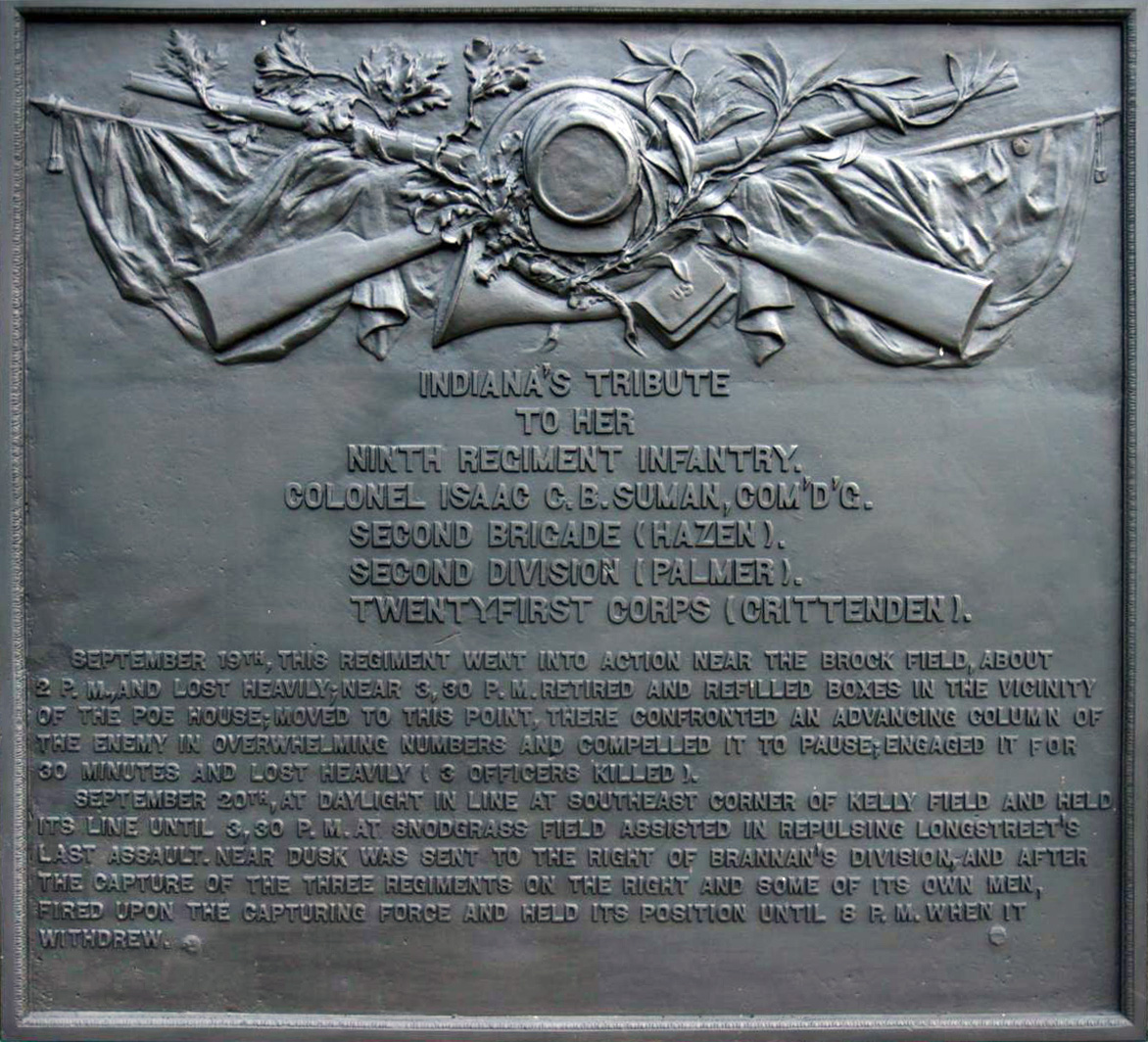
|
| Isaac Suman plaque |
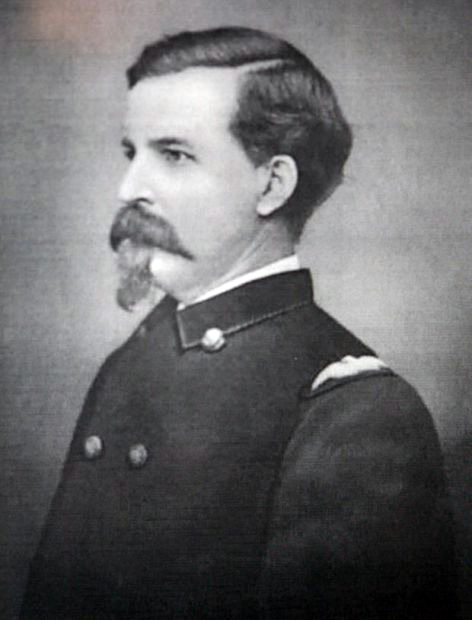
|
| Col. Isaac C.B. Suman |
The Blessings and Easterdays were intertwined in ways that can't be shown in the family tree at Family Echo; for example, Conrad and Juliana Easterday are brother and sister. Conrad's daughter Susan and Juliana's son George married each other. That's just one example of many that go all the way back to when the two families were still in Germany, when the Easterdays were Ostertags.
Deeper Still... Or... Who knew our German ancestors were really Swiss?
Perhaps not all of them but...
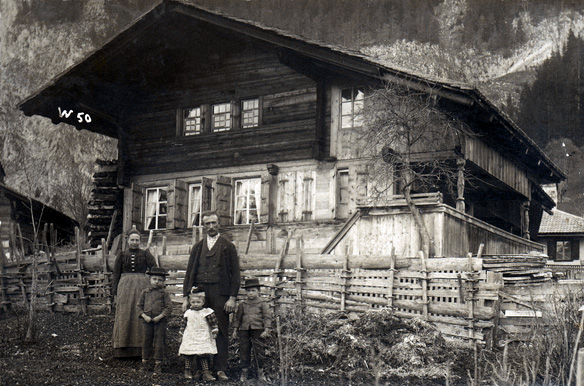
|
| Müller Haus in Schwarzenmatt |
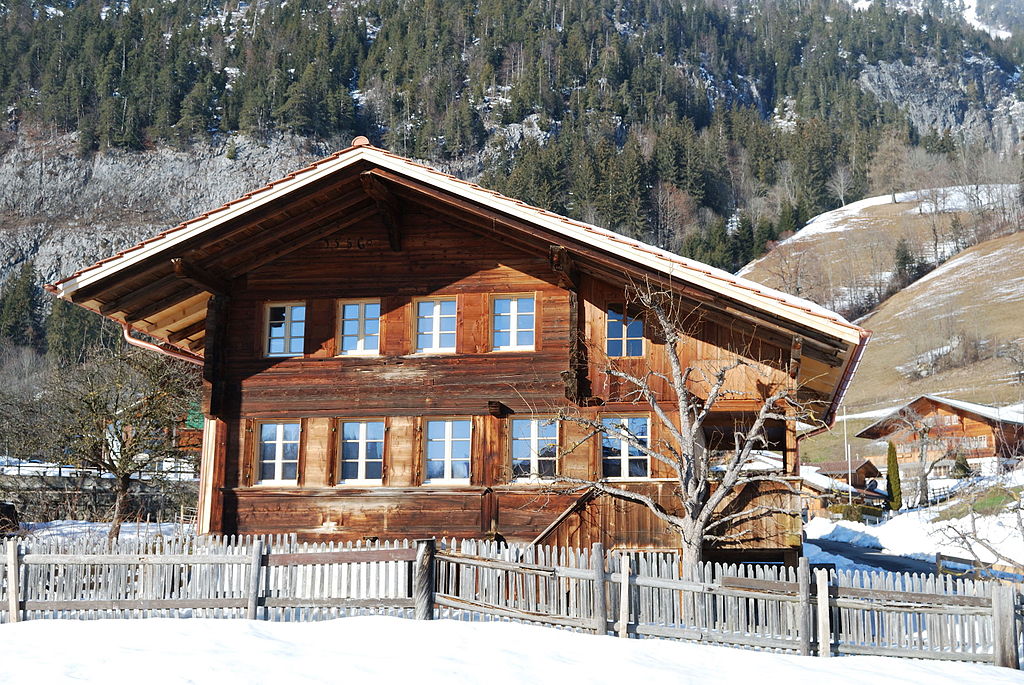
|
| A more recent view |
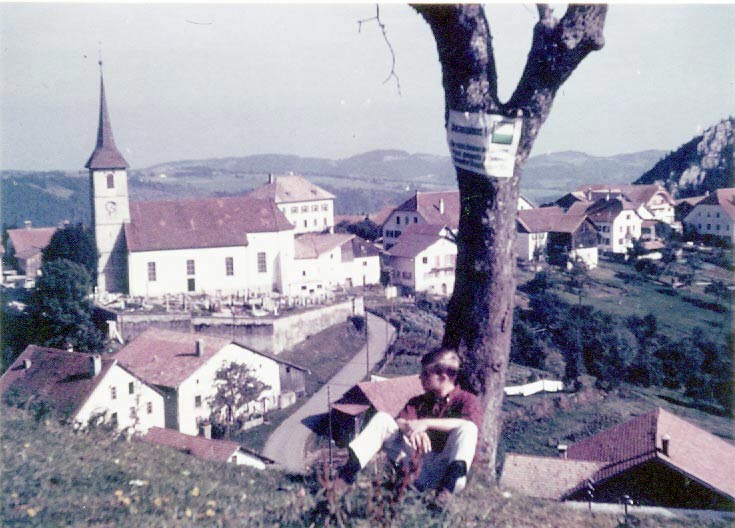
|
| Me in Switzerland 1964 |
In April 2019 I was contacted by Carole Pfisterer, who is my fourth cousin via Michael Rager (father of Rufus Rager Sr.), and who got me interested in following up the Rager branch in more depth (and height, and width). Thanks to some clues she unearthed in church and property records, I was able to trace the Ragers back several more generations and to satisfy myself that they were overwhelmingly German or (surprise) German-speaking Swiss. It turns out the latter were among the "Pennsylvania German pioneers", focus of a great deal of research and genealogy, almost on a par with the Mayflower passengers in terms of attention. Johann Michel Müller (a.k.a. Michael Miller), my 8-great grandfather on the Rager side, was born in 1655 in the tiny Alpine village of Schwarzenmatt, Canton Bern, Switzerland, in a wooden house constructed in 1556, a house that still stands and, in fact, can be rented by tourists as a holiday chalet.
Note: In this section I use "Germany" and "Switzerland" as shorthand for the corresponding areas of the Holy Roman Empire, which were then kingdoms, duchies, bishoprics, principalities, cantons, etc.
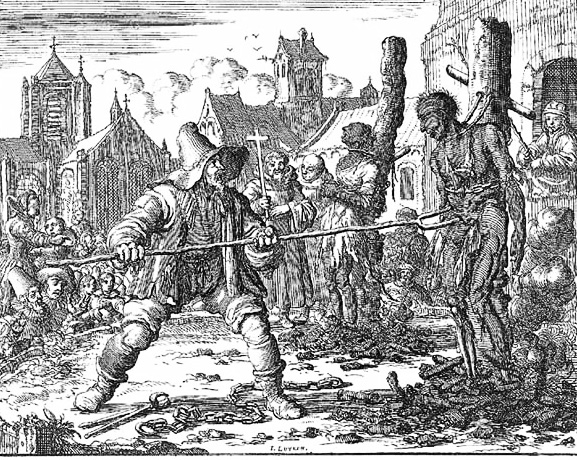
|
| Pietists |
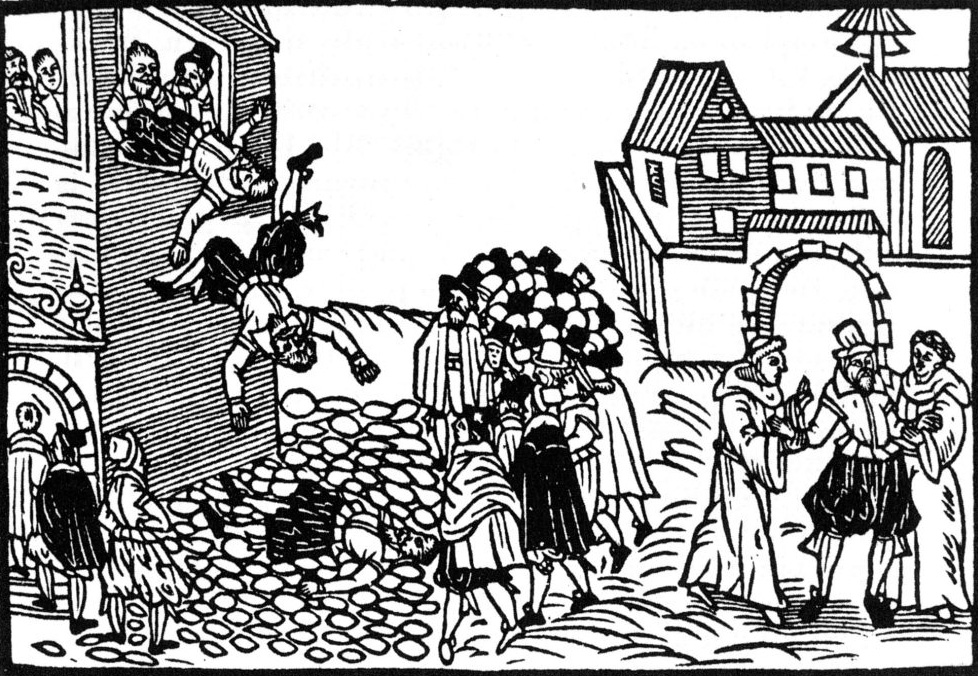
|
| Thirty Years War |
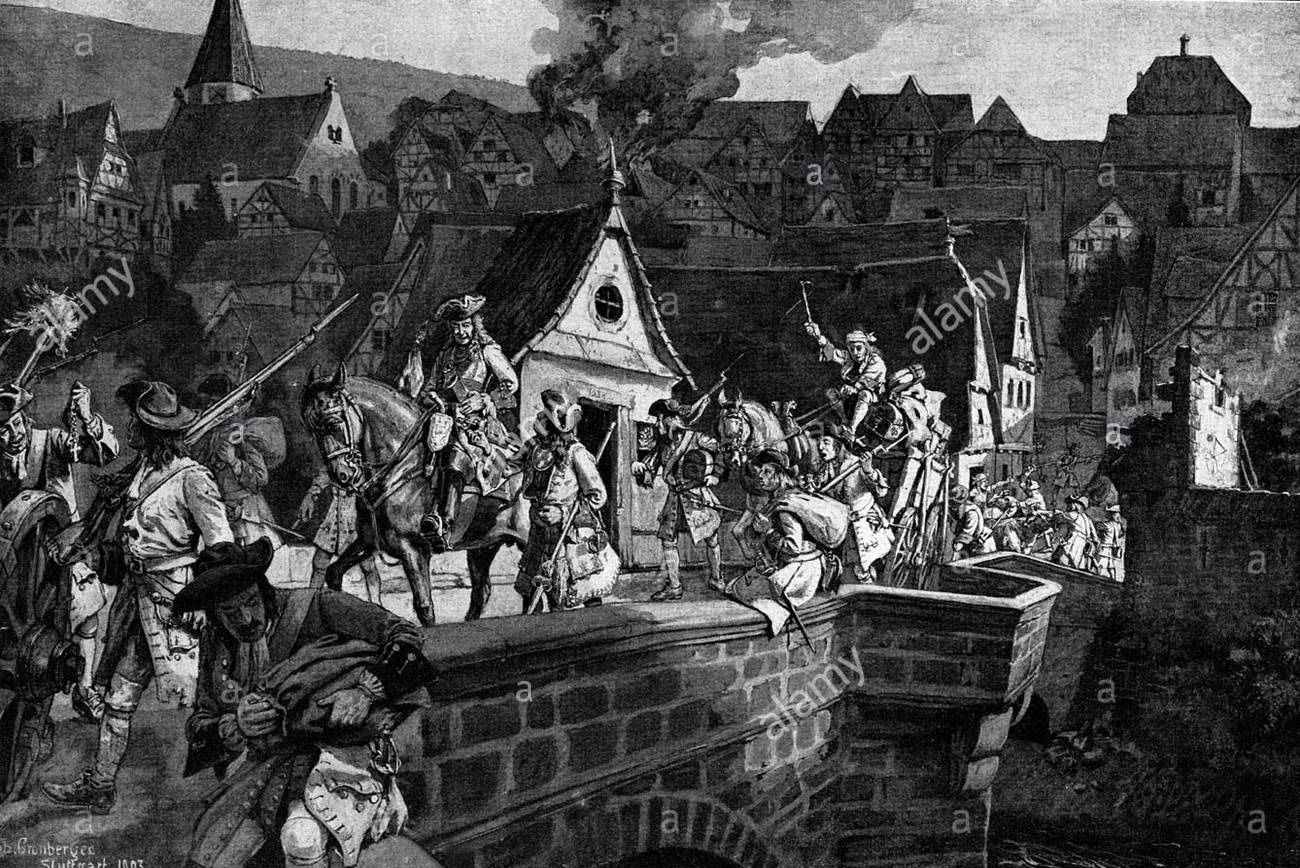
|
| Nine Years War |
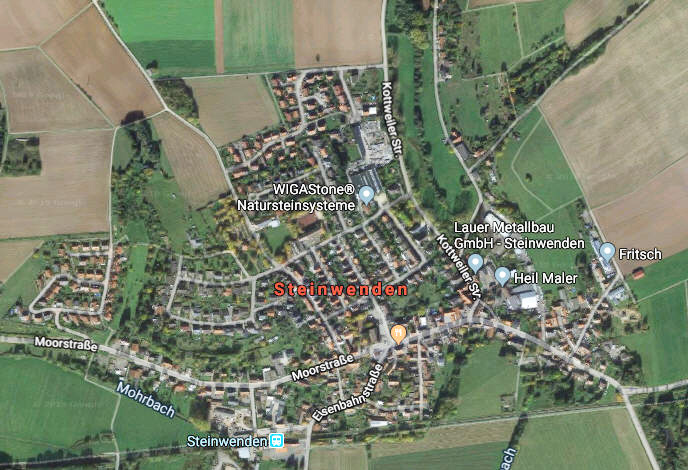
|
| Steinwenden aerial view |
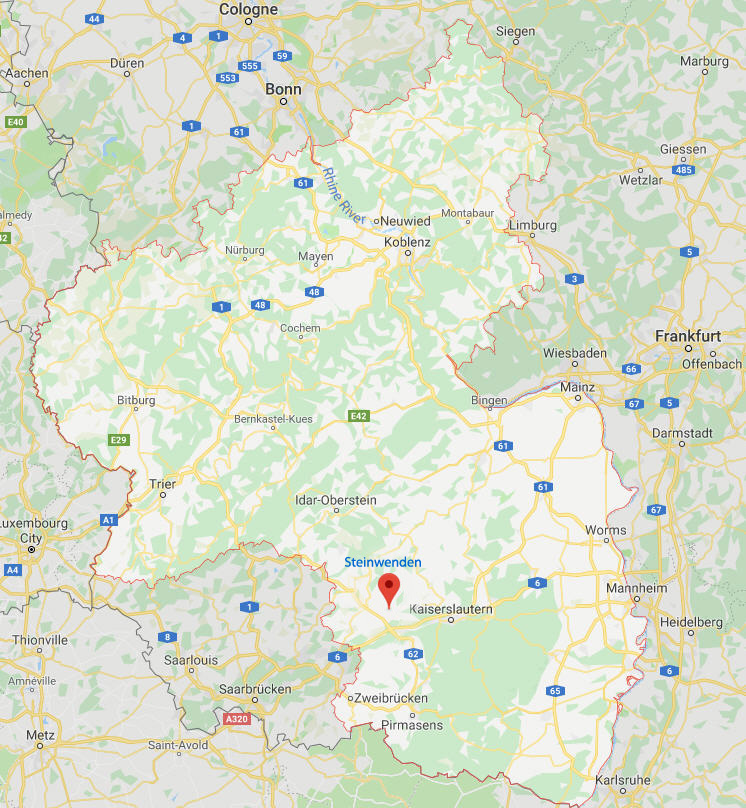
|
| Rheinland-Pfalz |
But the Müllers and Berchtols are not the only Swiss branch of the family. John Lantz, father of Mary Lantz, who was the mother of Rufus Rager Sr.'s wife Lydia Suman, was born in Switzerland and emigrated to Lancaster County, Pennsylvania. So that's another 1/64. And the great-great grandparents of Michael Rager (father of Rufus Rager Sr.) were Tobias Anspacher and Elizabetha Winsler, both born in Canton Bern, Switzerland. They migrated to Germany in the early 1700s (were they Brethren?) and the family remained there until 1749. And that's another 1/256, making me (at least) 5% Swiss.

|
| Port of Philadelphia 1730 |

|
| Amish in Lancaster |
Shortly after these settlers arrived they found themselves in the middle of a border conflict between Pennsylvania and Maryland called Cresap's War (1728-38), the two colonies disputing claim to the lands where the Brethren had settled and built their farms, making their lives impossible. In 1728 Pennsylvania militias ran the settlers off and burned their homes. In the 1730s, militias of both states started to demand rent, and to jail them. Some settlers resisted, but not the non-violent Brethren. The harrassment and violence was to last until the Mason-Dixon line was drawn in 1767.
Michael Miller (as Johan Michel Müller II is now known) saw the writing on the wall and started buying up land in Frederick County, Maryland. By 1752 he, along with a large group of Brethren and other Swiss Germans (and actual Germans), had moved to Frederick, already settled by other Germans who arrived in Maryland directly through the port of Baltimore — a few at first, then en masse starting in 1752.
Michael's son-in-law, Peter Balthasar Schumann, my 4-great grandfather (4GGF), was born in Schriesheim in Baden-Württemburg (just north of Heidelberg) in 1730, and he was a member of the Dunker Church, i.e. the Brethren. He emigrated to Pennsylvania in 1749, shortened his name to Suman, and settled there with his wife, my 4-great grandmother, the aforementioned Eleanor Beauford Müller. Theirs was another family forced by the border war to move from Pennsylvania to Frederick County in the 1750s.
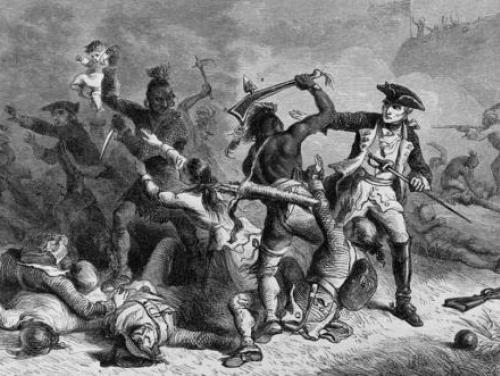
|
| French and Indian War |
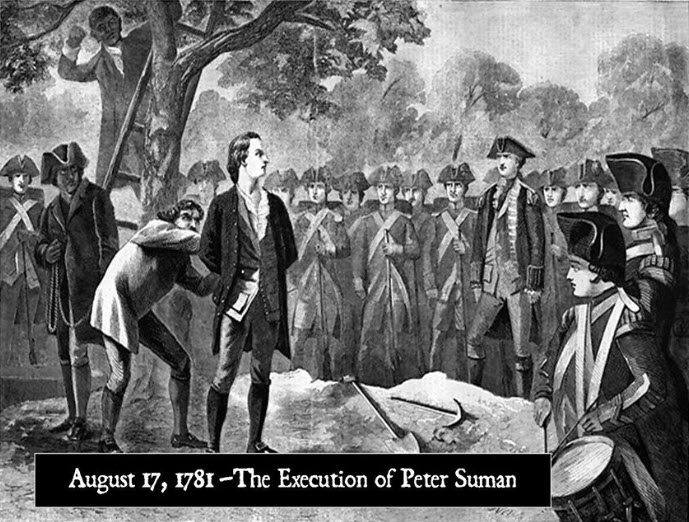
|
| Peter Suman's execution |
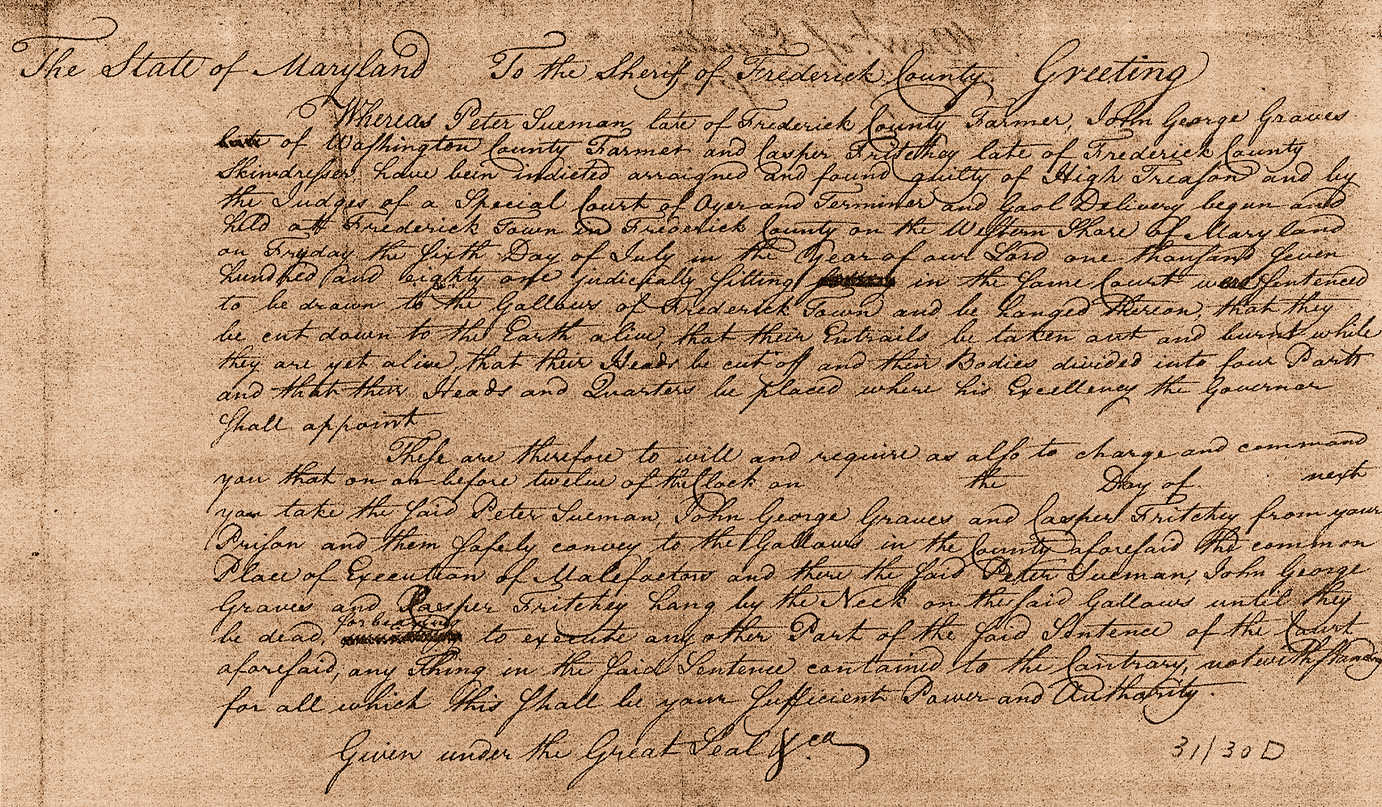
|
| Peter Suman's death sentence |

|
| Chastising a loyalist |
"You shall be carried to the gaol of Fredericktown, and be hanged thereon; you shall be cut down to the earth alive, and your entrails shall be taken out and burnt while you are yet alive, your heads shall be cut off, your bodies shall be divided into four parts and your heads and quarters shall be placed where his Excellency the governor shall appoint."Peter and two others were executed as indicated August 17, 1781, and the land where his wife Eleanor [my 4GGM] and their 11 children were living was confiscated. Did Peter's refusal to join in the uprising make him a loyalist? The charges against Peter remain controversial to this day, but who cares; some Brethren, Mennonites, and Quakers in the area might indeed have been loyalists by reason of their faith, which forbade both keeping of slaves and killing[26], at a time when the colonists had reason to believe the British would abolish slavery.
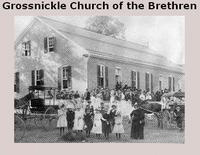
|
| Grossnickle Brethren Church, Ellerton MD |
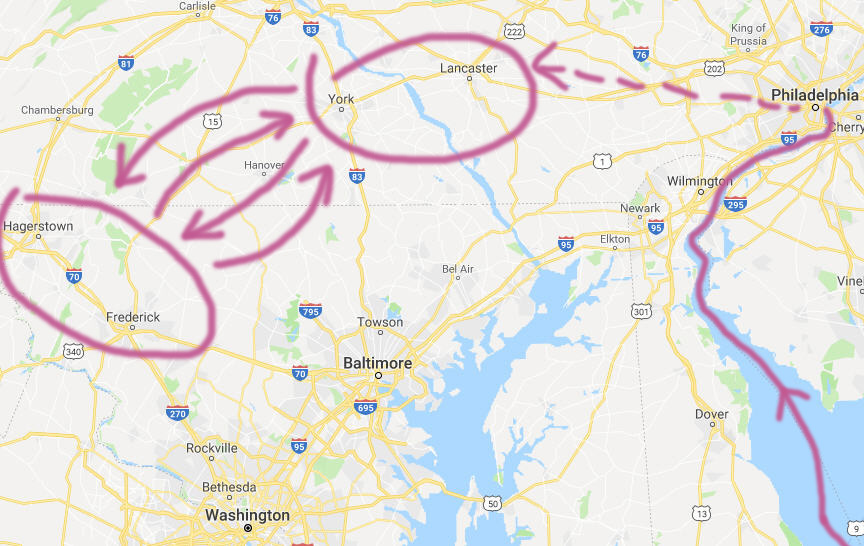
|
| Pennsylvania and Maryland |
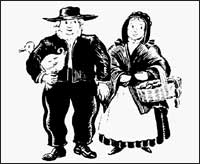
|
Going back a bit farther, it turns out the Müllers weren't always Swiss. Johann Michel Sr.'s paternal grandfather Daniel Müller (my own 10GGF) was Alsatian, and his grandma, Daniel's wife Magdalena was Bavarian, and her ancestors back to the 1520s were from Württemburg (where I lived in 1965, in Stuttgart; by the way, in this line we have some X-great grandmothers with operatic names like Walpurga and Apollonia). On the other hand, Johann Michel Sr.'s mother Salome Huber's family is Swiss all the way back to 1525, so Johann Senior is still "mostly" Swiss. Anyway, the distinction doesn't matter much given that the German-speaking countries and boundaries have been changing continuously over the past half-millenium. So for genealogy purposes I think it makes more sense to understand "German" as an ethnic/language group rather than a nationality, and in that sense Gus is just about 100% German.
- Roberta Estes, Heinsmann (Heinrich) Müller of Schwarzenmatt Switzerland, 15 September 2018.
- Roberta Estes, The Muller House on Kreuzgasse, 16 Feb 2019.
- Swiss Brethren, Wikipedia, accessed 3 May 2019.
- Thirty Years' War, Wikipedia, accessed 4 May 2019.
- Cresap's War, Wikipedia, accessed 4 May 2019.
- Roberta Estes, Johann Michael Mueller the First (1655-1695), November 8, 2015.
- Roberta Estes, Johann Michael Miller (Mueller) the Second (1692-1771), Brethren Immigrant, 27 December 2015.
- Roberta Estes, Irene Charitas (c1665-c1694) and Her Aching Mother's Soul, November 29, 2015.
- Roberta Estes, Backpedaling: Irene Charitas is a Heitz, not a Schlosser, April 15, 2018.
- Roberta Estes, Susanna Agnes Berchtol, 3 January 2016.
- Roberta Estes, Hans Berchtol, Twice a Godfather, 6 December 2015.
- German and Swiss Settlers in America, 1700s-1800s Immigration Records, AncestralFindings.com (accessed 4 May 2019). A bibliography of works on the wave of migration in the 1700s.
- Hermann Guth et al., Palatine Mennonite Census Lists 1664-1793, Family History Library (Salt Lake City), "a unique source for genealogical researchers as it lists where many of Swiss-German immigrants lived in Germany prior to emigration to America".
- Annette K. Burgart, Are Your Pennsylvania German Ancestors Really Swiss?, Der Kurier, v.12 n.6, December 1994.
- The Anabaptists and Persecution Against Them, Daniel Hason website, accessed 4 May 2019. "Hundreds of Anabaptists were deported or emigrated northward down the Rhine River into parts of southern Germany. An estimated 1,661 Anabaptists fled from Canton Zurich in the 1650s. Seven hundred helpless and impoverished Swiss Anabaptists were driven from their homeland in 1671. By 1700 few of them were left anywhere in northern Switzerland."
- Pennsylvania Dutch, Wikipedia, accessed 4 May 2019. "[A] wave of settlers from Germany, which would eventually coalesce to form a large part of the Pennsylvania Dutch, arrived between 1727 and 1777 ... The immigrants ... who were known as the Pennsylvania Dutch included Mennonites, Swiss Brethren (also called Mennonites by the locals) and Amish but also Anabaptist-Pietists."
- Klaus Wurst, Direct German Immigration to Maryland in the 18th Century, Loyola Notre Dame Library, accessed 5 May 2019.
- German Marylanders Timeline, GermanMarylanders.org, accessed 5 May 2019, according to which Frederick, Maryland, was first settled in about 1732. In 1735 about 100 families from the Palatinate (Rheinland-Pfalz) by way of the Chesapeake Bay, landing at Annapolis or Alexandria, settled at Monocacy and Frederick Town. In 1748, 2800 Rheinland emigrants arrived, settling mainly in Frederick Town. In 1777 the British garrisoned a Hessian regiment in the town during the war. After the war, with no way to return to their homeland, the men of the Hessian regiment stayed on and married into the families of the town, strengthening its German identity.
- Edward T. Schultz, First Settlements of Germans in Maryland, Frederick County Historical Society, 17 January 1896: "It is known that before the year 1750 a large number of Germans and their descendents had found their way into Maryland via the settlements in York and Lancaster counties and settled on the lands contiguous to the settlement of Monocacy ... The favorite route of the German immigrants was to the port of Philadelphia, thence to Lancaster County, where large settlements were made at an early period. From here they spread into other sections of Pennsylvania, and into Maryland, Virginia..."
- Steve Shook, A Porter County Civil War Officer: Colonel Isaac C.B. Suman, 1 February 2017. Isaac is my 3-great uncle. The second half deals with the horrific end of my 4-great grandfather, Peter Balthasar Suman, and a dirty secret of my 3-great grandfather Albert Suman.
- Hessian (Soldier), Wikipedia, accessed 6 May 2019.
- Who Were the German Baptist Brethren?, jacobbrumbaugh.wordpress.com, accessed 6 January 2020.
- Brumbaugh's Men and the Revolution in Hagerstown, Jacob's Estate, jacobbrumbaugh.wordpress.com, accessed 6 January 2020. Explains how all free adult males in Frederick and Washington counties of Maryland were required to join the militia to fight the British, and how the Brethren, Mennonites, Moravians, Quakers, and other pacifist sects would be labeled Loyalists and prosecuted if they refused. It also mentions that the topic of consciencious objection came up at the Second Continental Congress and systems of fees and fines was proposed but the issue remained in flux, colony by colony, town by town.
- The Pacifists (in the American Revolution), America in Class, Making the Revolution, Rebellion: 1775-1776, americainclass.org, accessed 8 March 2020.
- Peace Churches, Wikipedia, accessed 8 March 2020.
- Ronald J. Gordon, Who are the Dunkers?, Church of the Brethren Network (1998, 2013), website accessed 19 October 2020.
Gus's sisters
Back to my own lifetime!
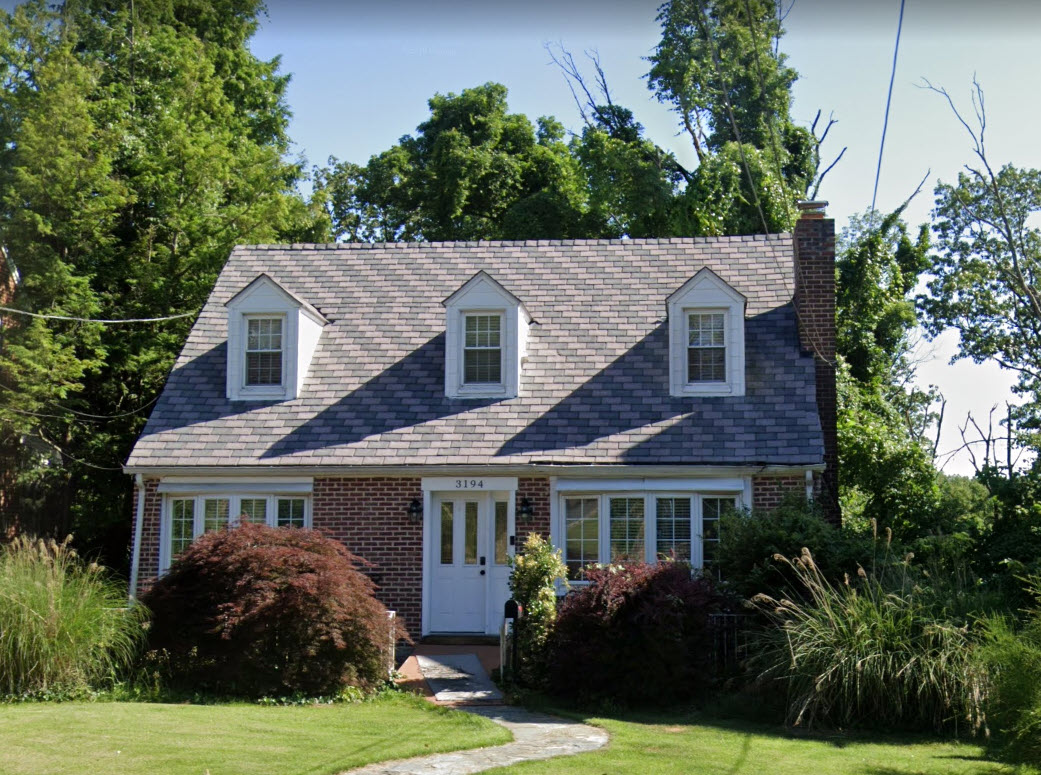
|
| Bess and Bill house 2019 |
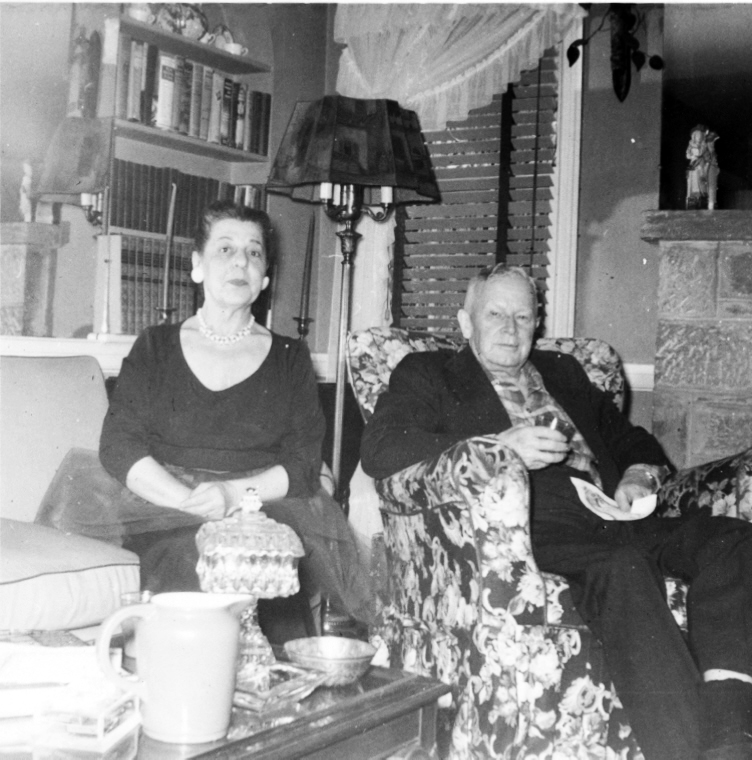
|
| Bess and Bill 1950s |
I lived with Bess and Bill for a week or two in summer 1961 when we came back from Germany and our house in Arlington wasn't ready. They were confirmed antisemites and racists, to the extent that's all they ever talked about. They may have passed this on to my dad (uncle Pete not so much); he certainly didn't get it from his own parents. It was a rude reintroduction to the country I had just returned to after 2½ years in the multiracial multicultural virtual paradise of the Frankfurt, Germany, Army base. One day they heard that a Jewish family was moving onto their street, so they instantly sold their house and moved to (would you believe) Florida, where Bill died in 1968 and Bess in 1980.
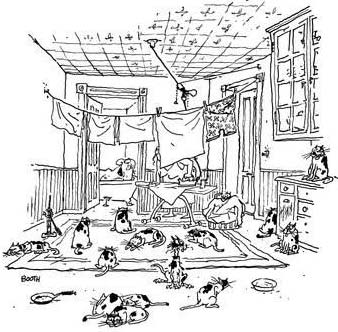
|
| George Booth cartoon |
The three sisters had one quirk in common — they painted strange designs reminiscent of Gaugin or Rousseau — twisting vines, devil faces, fantastic animals — all over every surface in their houses: walls, tables, chairs, lamps, vases, pianos, plates, everything. Aunt Bess had covered a basement wall with a huge mural of a Mexican vaquero in a gigantic sombrero studded with thousands of real sequins, surrounded by cactuses and gaudy desert flowers. I wish I had taken pictures but I didn't, nor did dad.
My father always said his mother was "demented" but I never knew what he meant by it, except for how she painted designs on everything — maybe it was because, unlike her sisters, she wasn't an over-the-top bigot. I don't recall her ever saying "nigger" or for that matter, a bad word about anybody. Although I imagine she didn't care much for Hitler.
Gus's House Arlington VA 1945-47
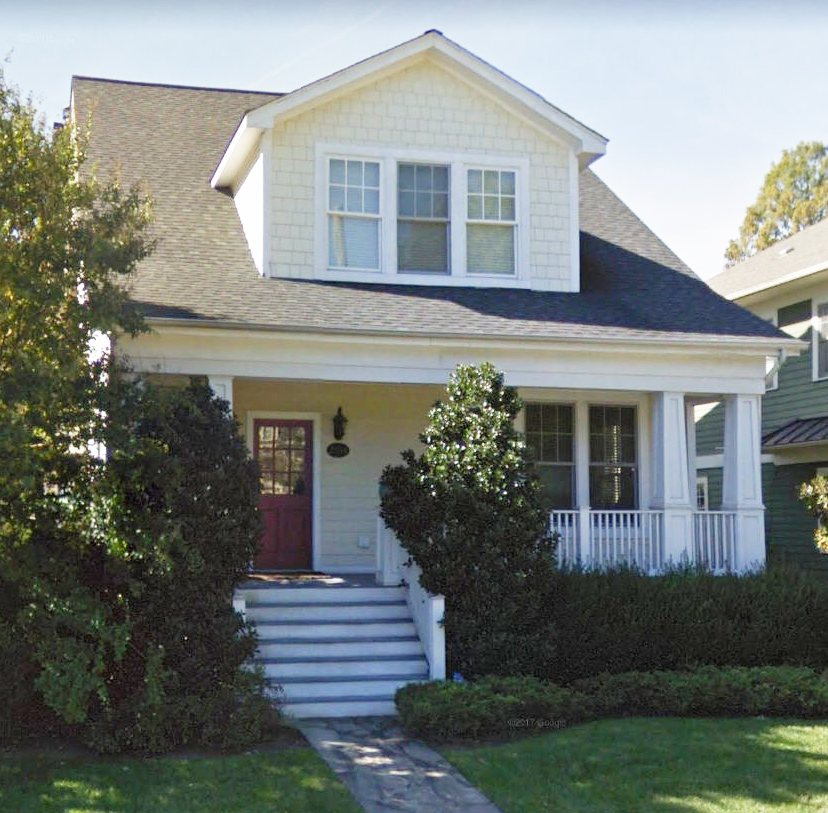
|
| Gus's house in 2012 (Google) |
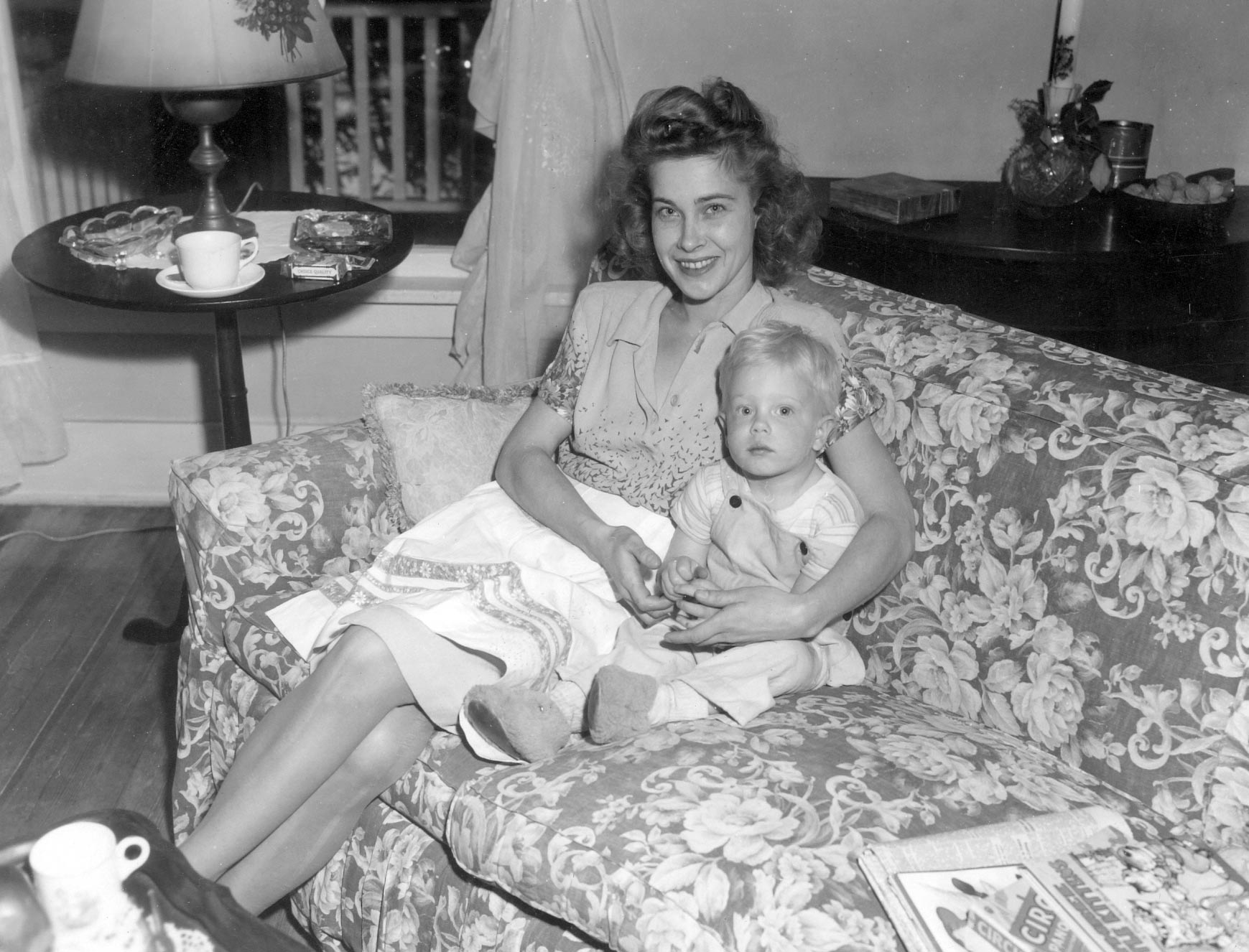
|
| Mom and me at Gus's house 1946 |
In any case, Dad moved back in with Gus (and presumably Jake) in 1941 when, in his second Navy hitch, he was assigned to Navy Department headquarters in DC. Pete also lived there for about a year in 1940-41 when he was going to George Washington University, then went off to the war, then moved back in with her in the mid-1950s when he resumed his college education at Georgetown University on the GI Bill. About Jake... Dad writes in a 1941 letter to Gus after spending a week's shore leave with her, "I was surprised, in a way, at what a nice old guy Jake is. I don't hardly know what I expected, but whatever it was, he certainly surpassed all my expectations."
When Dad, Mom, and I lived with Gus in 1945-47, Glebe Road was lined with substantial 1920s-vintage white frame houses; I remember going trick-or-treating along there as a child. I used to play with the little girl two houses over in her backyard, Laura Schmidt.
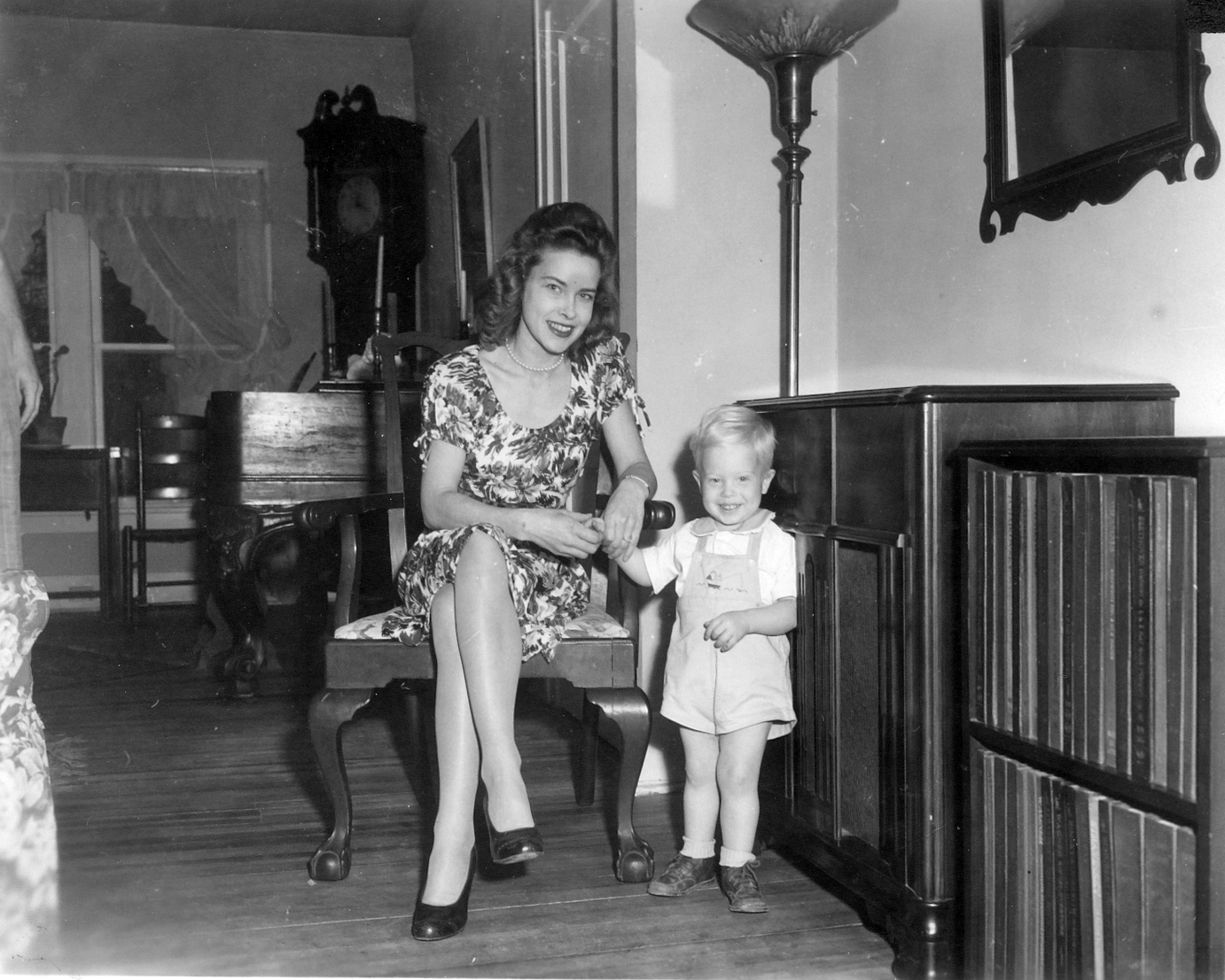
|
| Inside Gus's house 1946 |
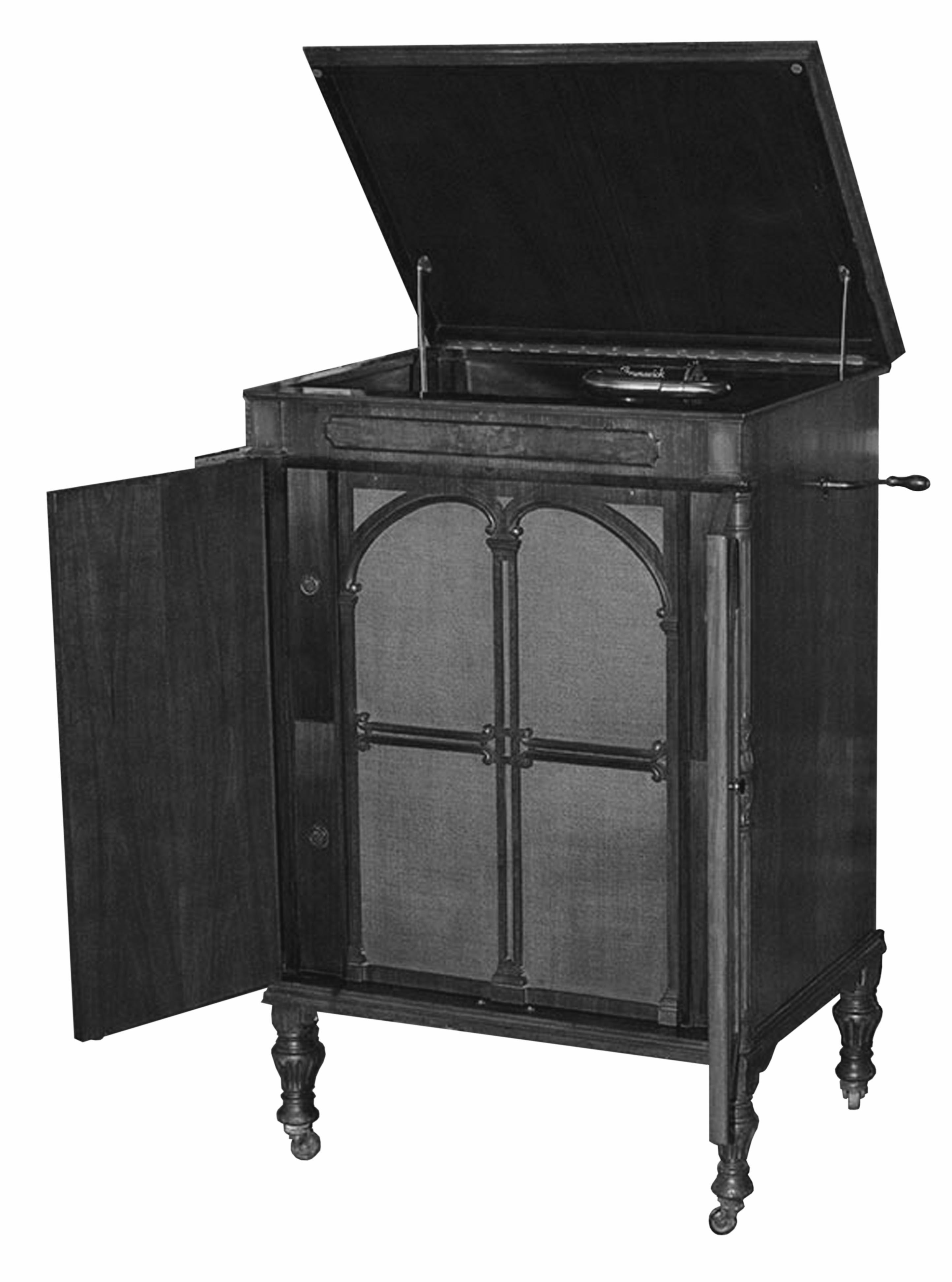
|
| Windup Victrola |
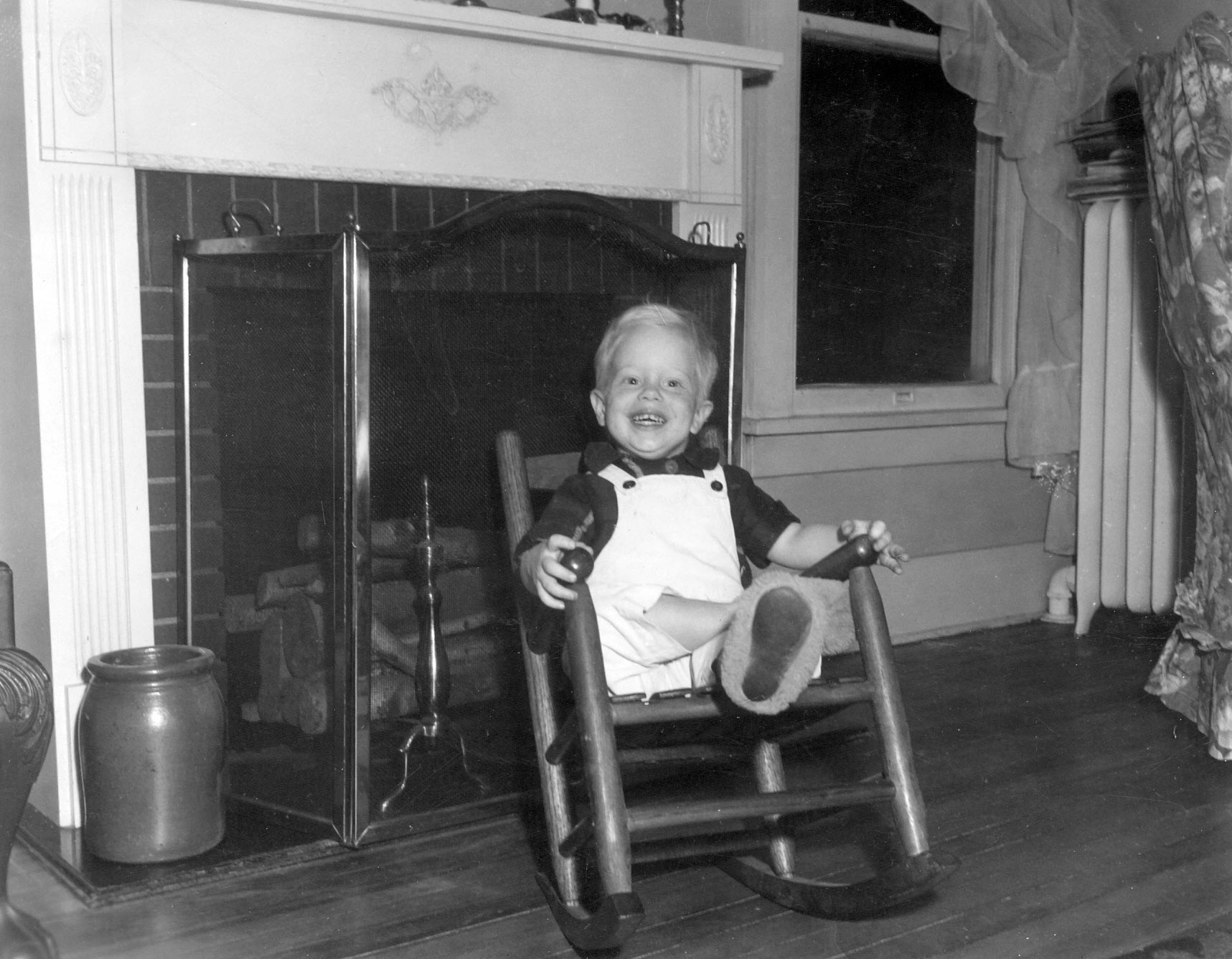
|
| Gus bought me a rocking chair |
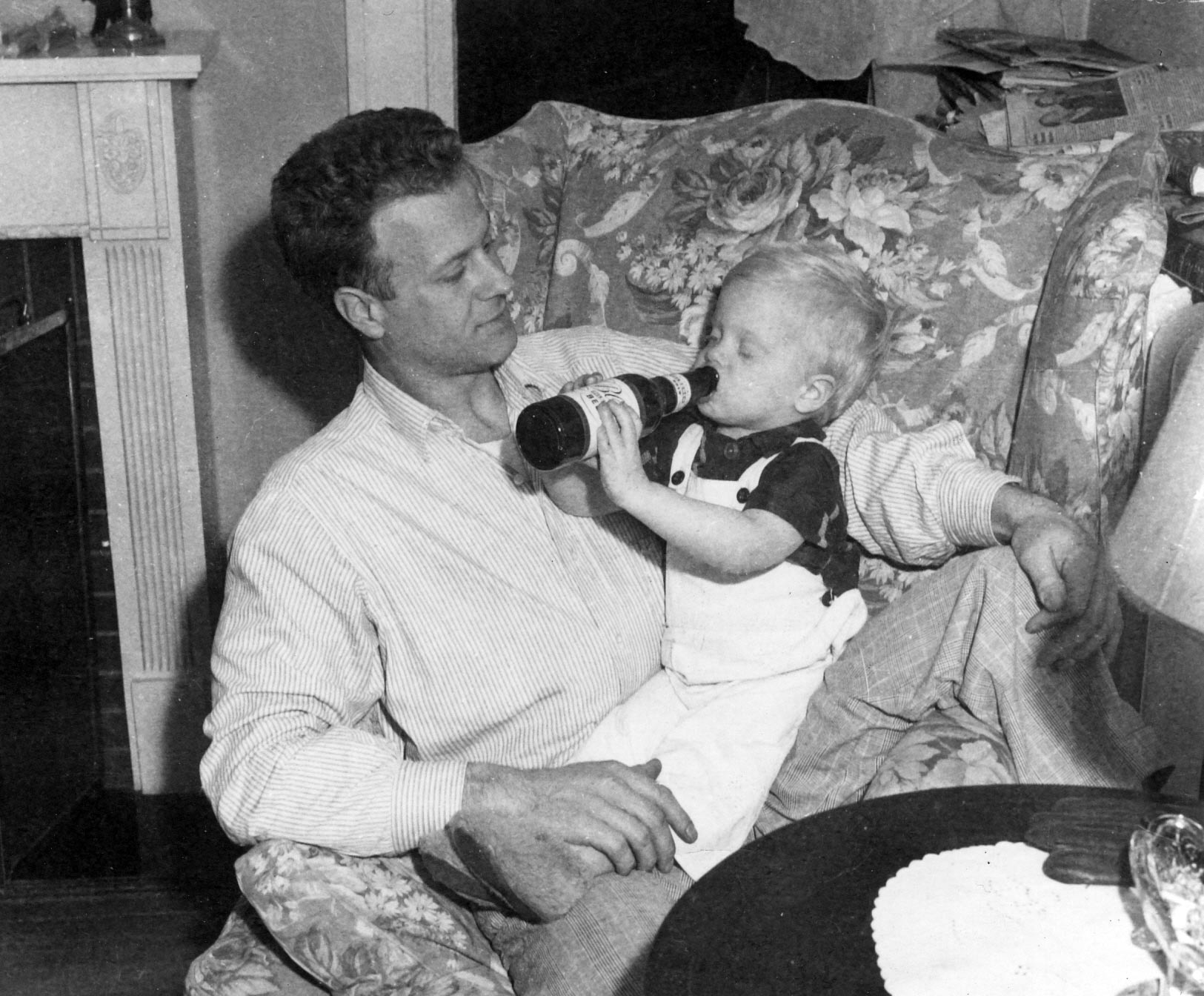
|
| Dad and me at Gus's house 1946 |
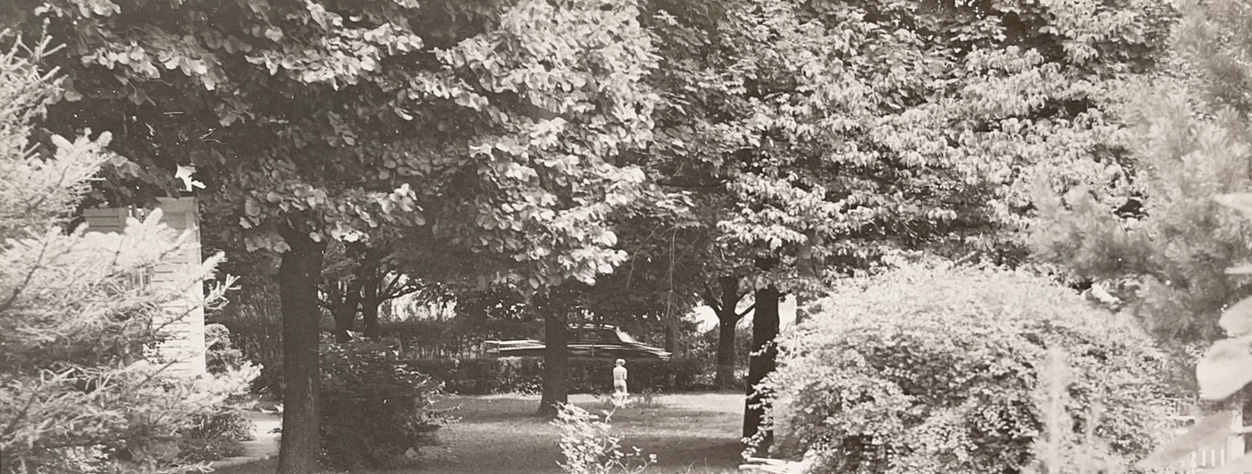
|
| Gus's scandalously lush back yard |
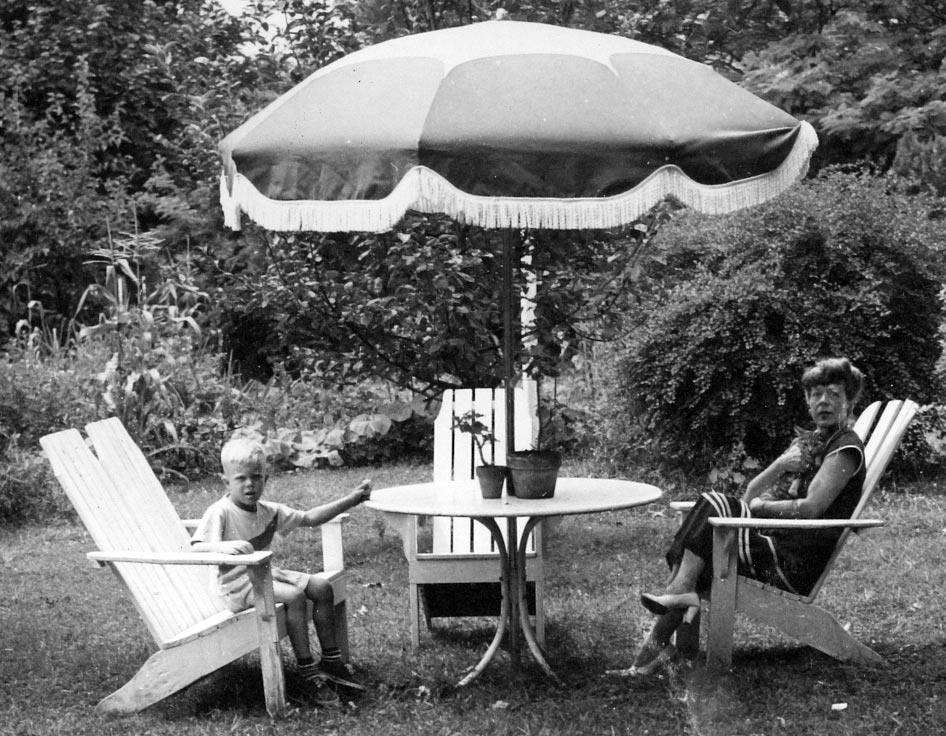
|
| Gus and me in back yard |
Gus had a tenant living the basement. The radiator in the kitchen had a big hole for the water pipe and I could look through to see the tenant's apartment. One time I dropped all my Tinker Toy sticks down the hole. This was when I was one year old; I remember it clearly.
Another memory… Once when we were there she had mice under the front porch. So she filled one of those old fashioned metal flit guns (yes, I have a picture of it) with DDT and put on her grey WWI gas mask and went under the porch on hands and knees to "fumigate" it. I was so impressed by the gas mask she gave it to me. It was very antique-looking, with a long canister that stuck out in front. Of course it never occurred to me to ask her about her experiences in WWI (my Dad was born to her during that war), but she was indeed a Red Cross nurse during both World War I and the 1918 flu. And World War II.
As you came down Gus's stairs there was a Mona Lisa reproduction on the facing wall, and the bathroom to the right that had an etched-glass window so people couldn't see inside. On the sink was her tube of Ipana toothpaste, a top brand then, now long forgotten except in crossword puzzles.
For years I used to have a dream about my grandmother's house; I was very little, crawling up the narrow red-carpeted stairs (as a baby) towards a room at the top of the stairs and coming into a bright light with some kind of intense feeling. This was long before my dad ever told me I was conceived up there; I always pictured the act taking place on the grass next to the Reflecting Pool in DC, between the Lincoln Memorial and the Washington Monument, where my Mom's barracks were in 1944 (WAVE Quarters B, West Potomac Park) (but now that I think about it, that would have been in February, a bit chilly for frolicking in the grass).
The area around Gus's house in the 1940s was like small-town America in a Frank Capra movie. There was a small cluster of old-fashioned stores two blocks away at "the corner" (intersection of Lee Highway and Glebe Road, Lee as in Robert E) — hardware, barber, drug store, a small Safeway supermarket, a very small movie theater (the Glebe Theater), Peoples Drug Store (soda fountain), and best of all the "Dime Store" — Libby's 5 and 10 Cent Store (actually Robertson's) — that sold toys, candy, comic books, "notions", and other cheap things like a mini-Woolworth's owned by a lady named Libby who was very nice to children (or, it turns out, at least to white children). When I was 9 and 10 years old, whenever we went to visit my grandmother, she'd give me a whole dollar and I'd go to the Dime Store on my own and come back with a load of toys and comics (which in those days included the comic book called Mad, which later became Mad Magazine).
As noted elsewhere, after Gus died we moved to a brick house directly behind her house but three short blocks away. It didn't occur to me before, but the house we moved into in 1956 didn't exist when we lived with her in 1945-47. I wonder what was back there then! (Later... now I know; see the 1943 Franklin Survey plat maps.)
After a gap of some 22 years, I visited my Dad in 1988, and he took me on a nostalgia tour in his car… The 19th Street SE apartment in DC, Gus's house.... He walked up to the door and knocked on it, a youngish prosperous-looking man answered, dad explained he used to live there in the 1940s and his mother was the original owner; the man invited us in to look around. This was when dad showed me where I was created. The place didn't look very familiar inside, the man said they had done a lot of renovating. Dad mentioned that he and Pete had remodeled the basement so Gus could take in boarders. The man said, "So YOU were the ones! That was the worst wiring job I ever saw!" (Dad blamed Pete for it.)
From an email to George Gilmer, December 2015, about how I happened to have grown up in Virginia:
Your family goes back pretty far in the area. Mine all came from other places. The "anchor" was my father's mother (Gus) who lived in Arlington on Glebe Road at N.23rd Street. She was born in Maryland but after she got married she moved to Kansas with my Portuguese grandfather, and that's where my Dad was born. But when she and my grandfather broke up she moved back to the Washington area to work at Georgetown University Hospital as a nurse. My Dad joined the Navy in 1937 and sailed the seas until the USA got in the War and was assigned to Navy Dept HQ in DC and lived with his mother in the Glebe Road house, met my Mom at work, I was born, etc. Anyway it seems like he always wanted to live somewhere close to his Mom, so sometimes we lived in her house, we lived in an apartment in NE DC for a while, moved back to her house, then to Chesterbrook. When she died in 1955 we moved to a house that was only 2 blocks from her house (we would have moved to her house but my father and my uncle couldn't agree who would get it so they sold it). My Mom, as you know, came from Minnesota. The only American side of the family was my father's mother, a family that had been in Maryland since the 1700s; everybody else was recent immigrants.So in short, Gus was the anchor. Even if she and my dad didn't get along and he thought she was crazy, he always wanted to be around where she was. Danny (my cousin who grew up in Lebanon) says, "It's a real shame we didn't get to know Gus directly, although Dad [Uncle Pete] talked to us about her with fondness (and also left us the impression she was a quirky force field around which they gravitated)". Danny's sister Lina (also my cousin, of course) says, "Dad loooooved Teita Lenore and made us love her ... by talking to us about [her]". He loved her so much that Lina's middle name is Lenore! Danny and Lina's cousin Rif (Rifa'at Haffar, son of the sister, Najwa, of Gus's daughter-in-law Leila), upon reading this, commented "What a wonderfully disruptive creature she must have been!".
